Asia travel is famous for its delectable culinary scene. As part of the cuisine, Asia is home to an astounding variety of fruits. From the sweet and tropical to the tangy and exotic, Asian fruits offer a tantalizing array of flavors and textures that are sure to captivate your senses.
1. Top 10 green Asian fruits
1.1. Jackfruit
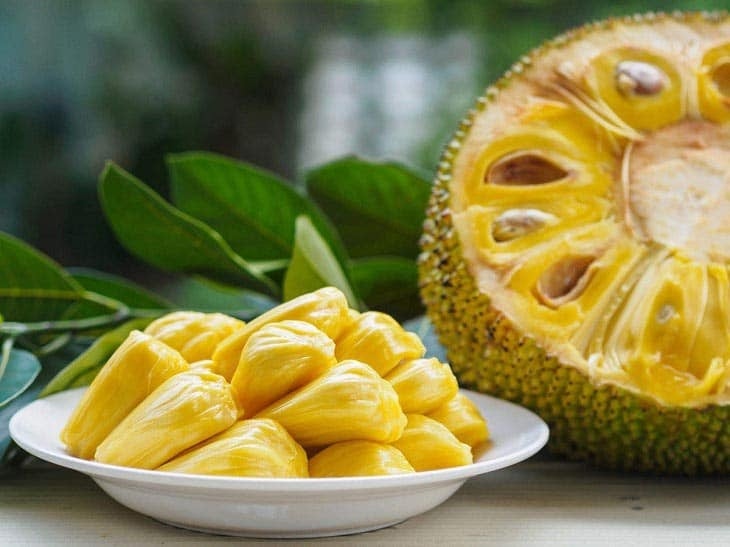
Jackfruit stands out with its distinctive appearance, which resembles a slightly elongated melon among other Asian fruits. Its vibrant green skin is adorned with tiny, smooth bumps. Jackfruit's dense, fibrous texture is reminiscent of mango or pineapple. The flavor profile of jackfruit is a subject of debate among enthusiasts. Some liken it to a delightfully sweet blend of mango and pineapple, while others are surprised by its resemblance to pulled pork, owing to its stringy texture.
1.2. Guava
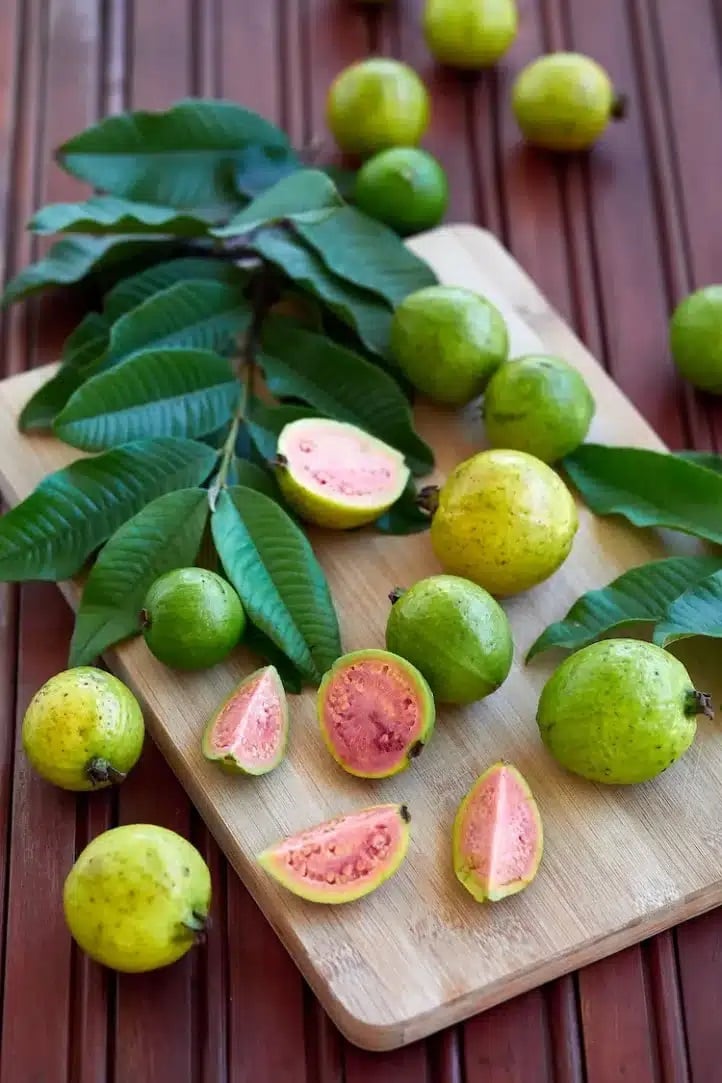
Lovers of soft and sweet fruits will rejoice in the delightful taste of Vietnamese guava, a cherished gem among green Asian fruits. This palm-sized delight boasts edible skin and flesh, allowing for easy consumption straight from the hand. The luscious flesh of guava comes in shades of pink, red, or orange, depending on the variety, offering a delightful blend of pear-like juiciness and strawberry-like sweetness. Guava has found its way into a myriad of culinary delights, from smoothies to fruit desserts.
1.3. Pomelo
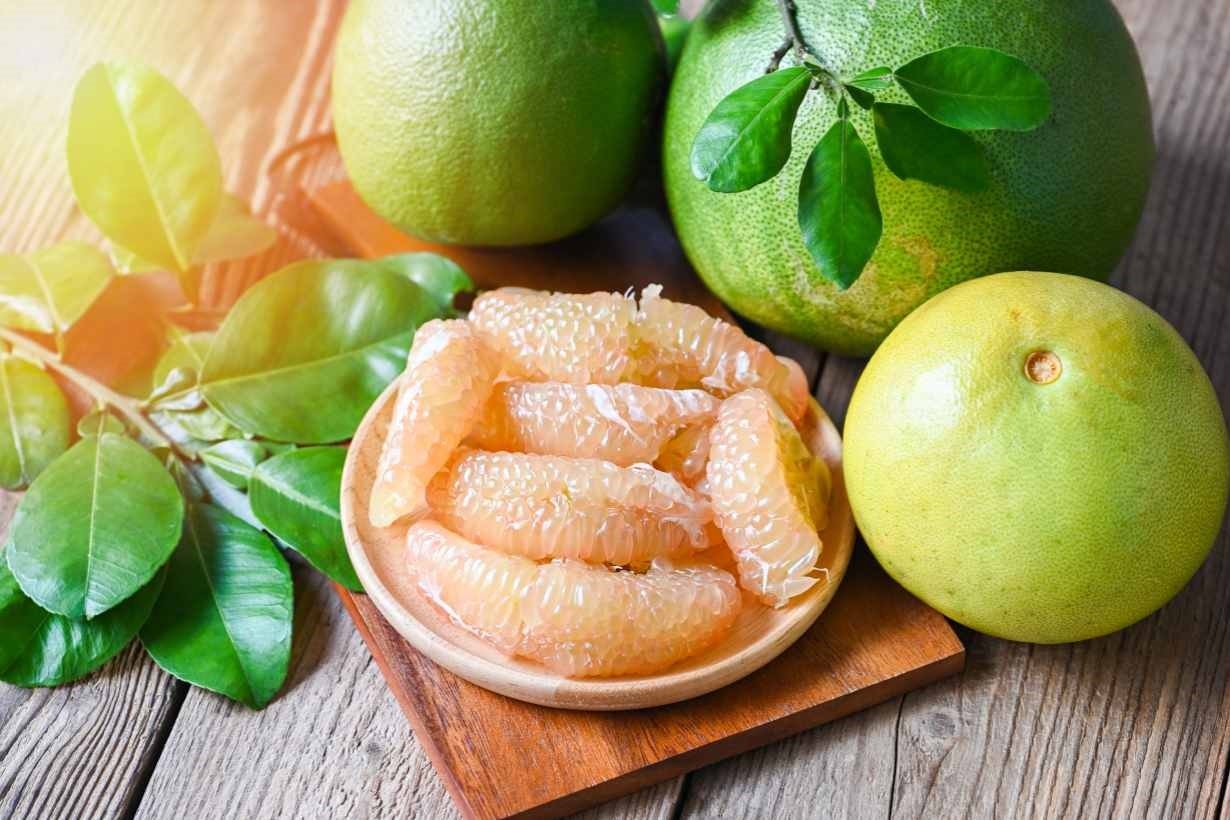
As the largest member of Asian citrus fruits, pomelo makes a bold statement with its round shape and vibrant green or yellow skin adorned with distinctive dots. Peeling the thick, creamy flesh of pomelo reveals a spectrum of colors ranging from white to pink or purple, complemented by tiny seeds or none at all, depending on the variety. With a milder taste compared to grapefruit, pomelo offers a sweeter flavor profile, making it a versatile ingredient in salads, juices, and sauces.
1.4. Durian
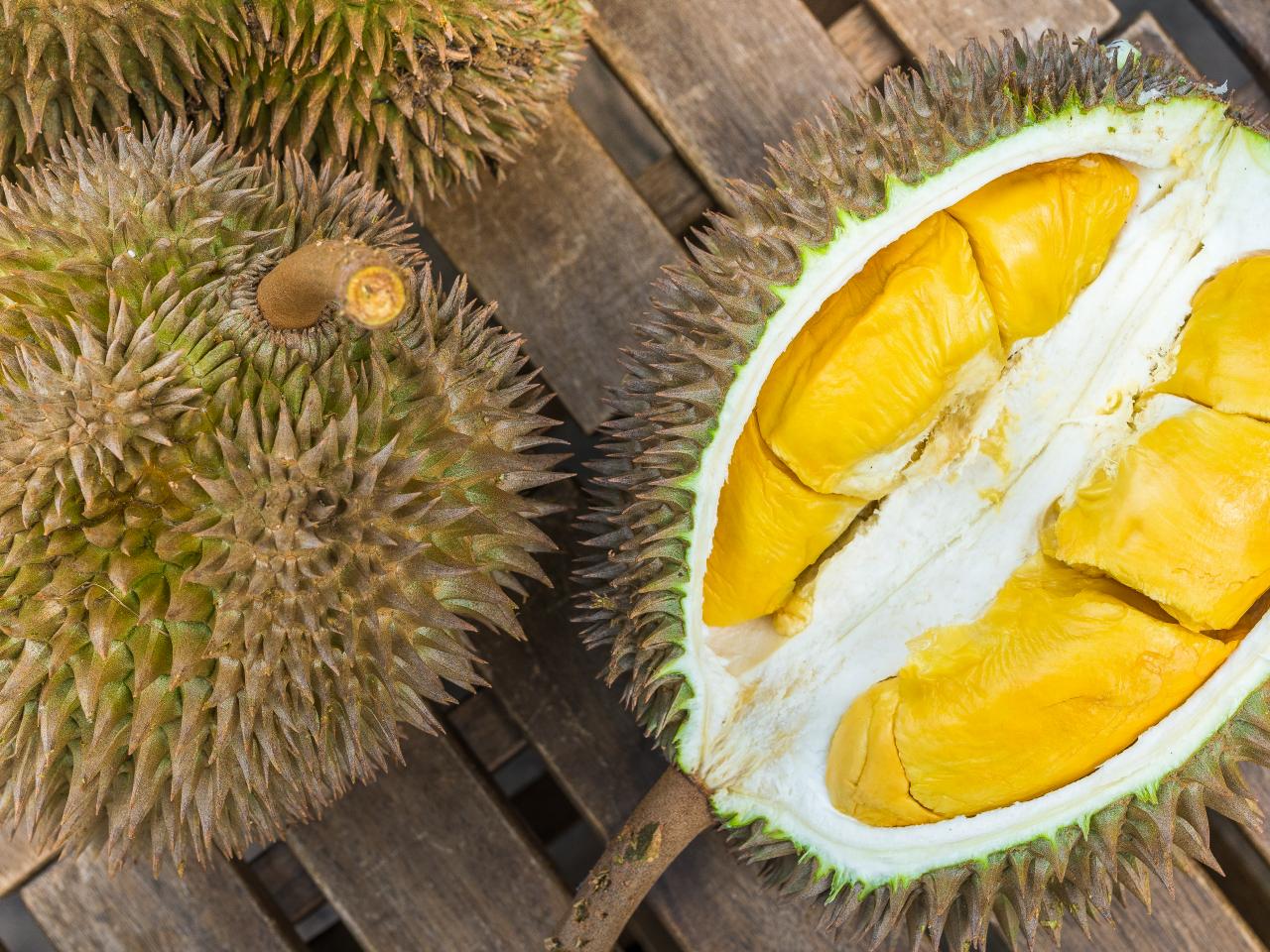
Prepare to either be enchanted or repelled by durian. Encased within its coarse, spiked skin lies a creamy flesh with a sweet taste that divides opinion. Durian's infamous odor has earned it a controversial reputation, with some establishments even banning its consumption due to its pungent aroma. Despite its polarizing nature, durian has found its way into a plethora of culinary delights, from ice creams to curries, captivating adventurous palates across Asia. Vietnamese durian is a must-try among these Asian fruits.
1.5. Avocado
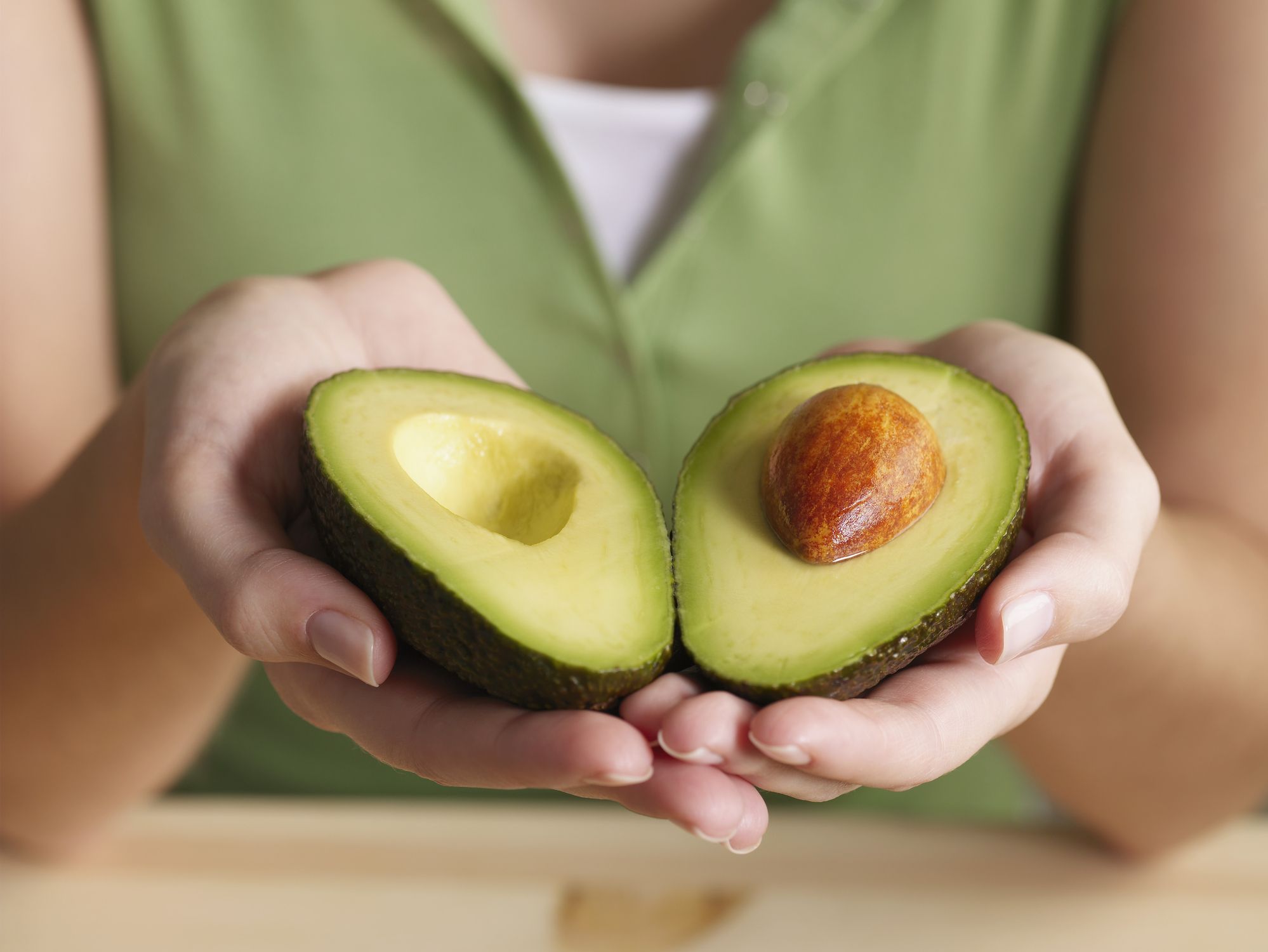
Vietnamese avocado, celebrated for their creamy texture and rich flavor, elevate the culinary landscape with their versatile uses and nutritional benefits. Whether blended into refreshing smoothies or featured in savory salads, avocado shines as a prized ingredient. Cultivated predominantly in the provinces of the Central Highlands, Vietnamese avocado thrives in the fertile soils, reaching its peak during the summer months, offering a bounty of goodness to eager enthusiasts.
1.6. Soursop
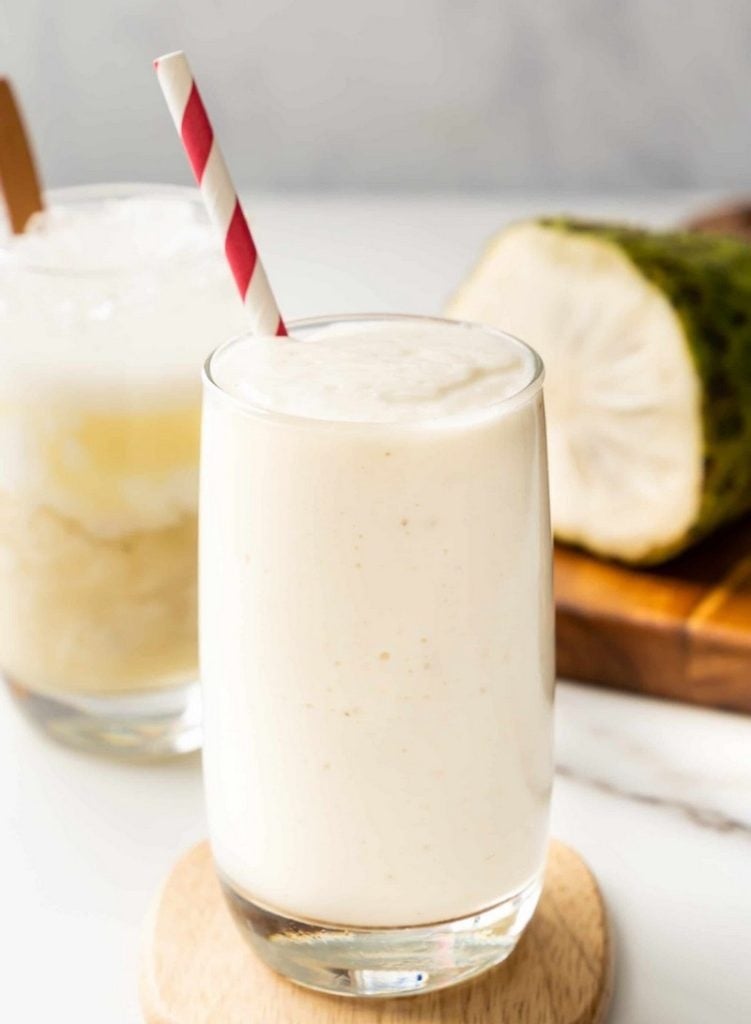
Soursop, a hidden gem among Asian fruits, boasts an oval shape and a bold flavor profile that appeals to palates across Asia and the Caribbean. Beneath its tough, spiked green skin lies a treasure trove of aromatic, creamy flesh. The taste of soursop strikes a delightful balance between the sweetness of strawberries and the tangy notes of apples, with a hint of citrus-infused sourness. Often enjoyed raw, soursop's versatile flesh has found its way into smoothies, desserts, and other sweet treats.
1.7. Custard apple
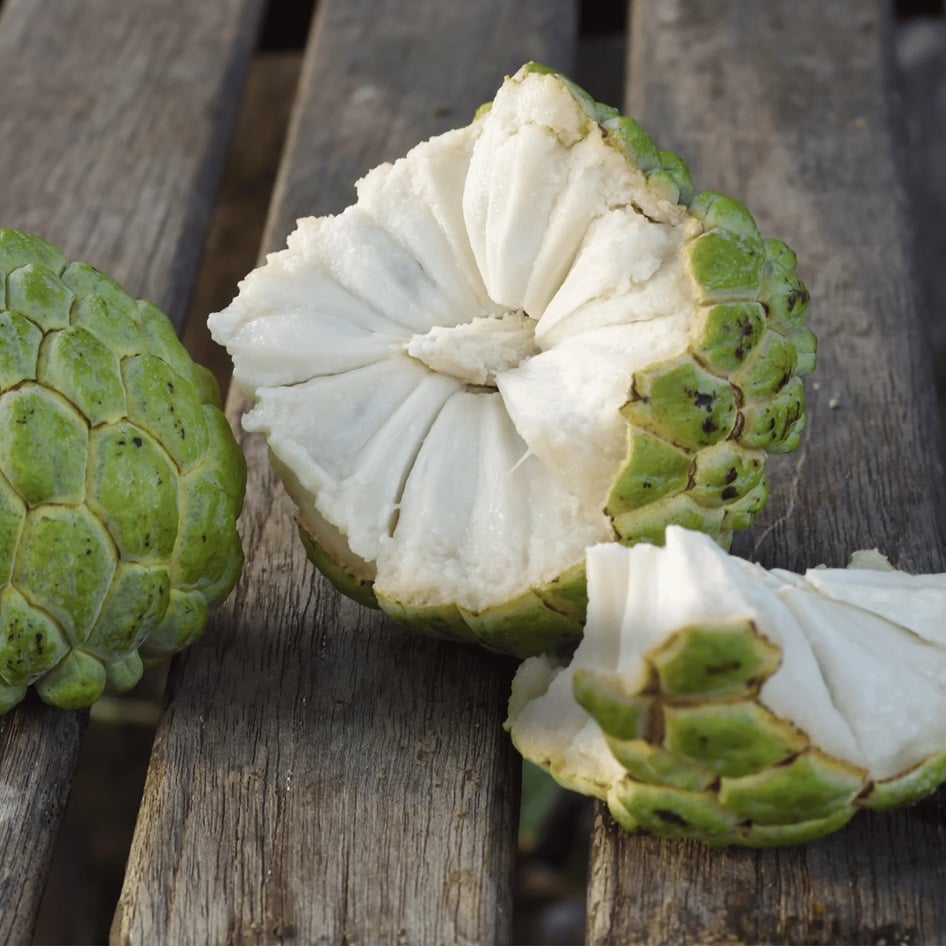
In Asia, Vietnam is home to two varieties of custard apples, each offering a unique texture and flavor experience. Regardless of the shape, custard apple features a rough, green peel encasing white, milky pulp with a sweet, pleasant flavor. While the skin and seeds are inedible, the ripe fruit is easily peeled or broken open by hand, revealing the delectable flesh within. Whether sliced into pieces or eaten with a spoon, custard apple is a delightful treat for those seeking a taste of tropical indulgence.
1.8. Coconut
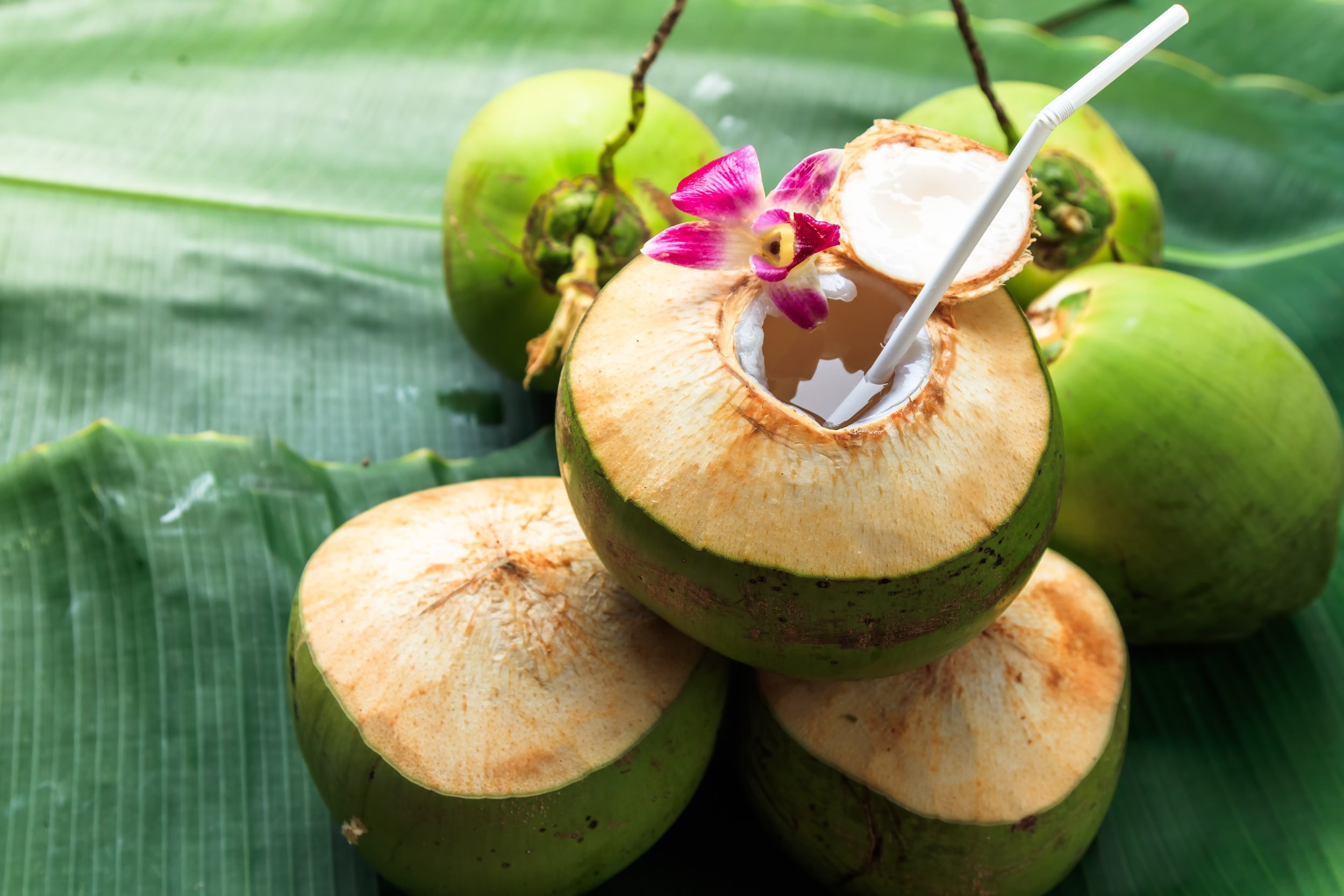
Coconut, revered as one of the most iconic tropical Asian fruits, infuses a myriad of dishes, juices, and desserts with its unmistakable flavor. Available in green or brown varieties, coconuts offer two distinct highlights: refreshing coconut water and creamy white flesh. Green coconuts are prized for their water, while brown coconuts boast rich flesh. Whether sipping on the refreshing coconut water or indulging in the creamy coconut flesh, experiencing the taste of fresh coconut is a must for any visitor to Asia.
1.9. Star apple
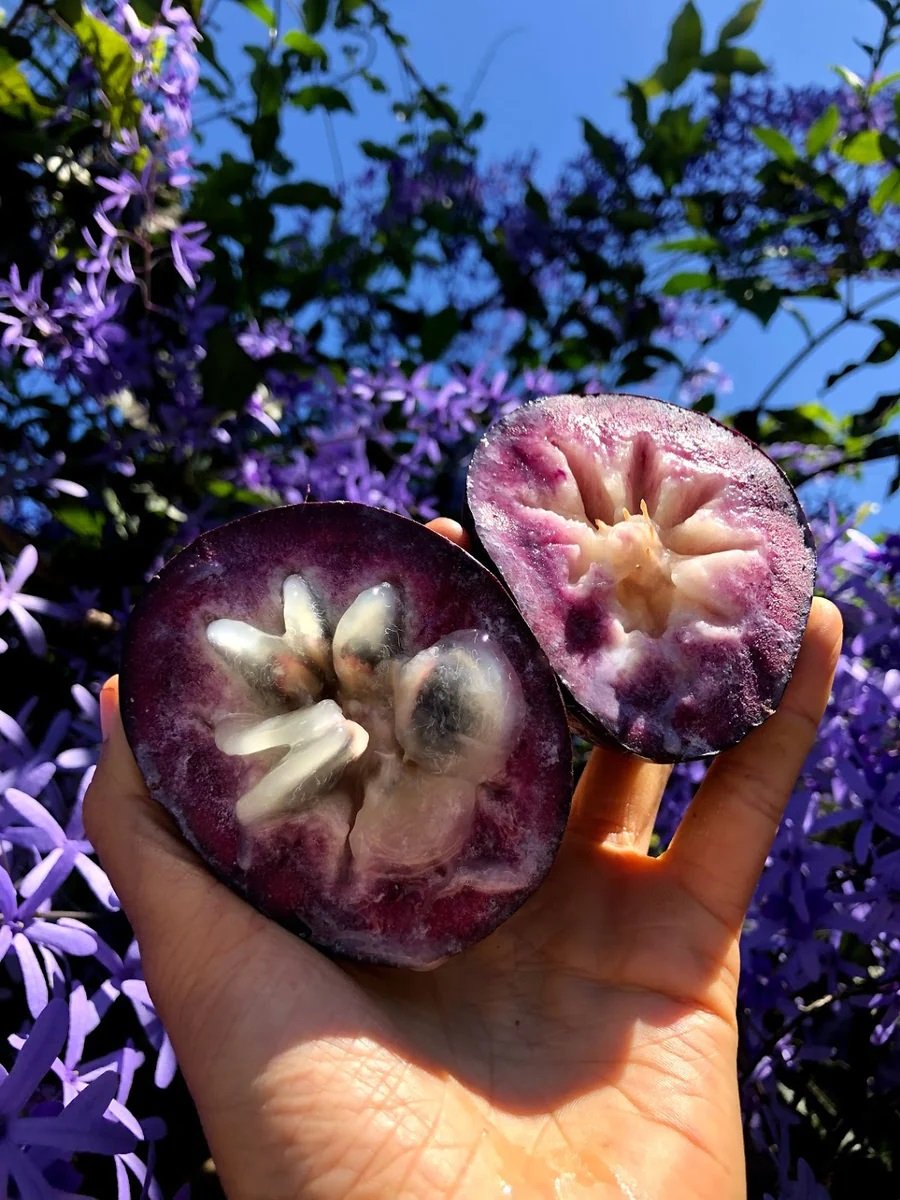
True to its name, star apple reveals a captivating star pattern formed by its seed when sliced open, adding a touch of whimsy to its appearance. Available in purple, brown, or yellow varieties, star apples delight the palate with a flavor reminiscent of a cross between the sweetness of grapes and the earthiness of persimmons. With its unique taste and visually striking appearance, star apples are a delightful addition to any fruit platter or dessert spread and never fail to evoke a sense of delight.
1.10. Watermelon
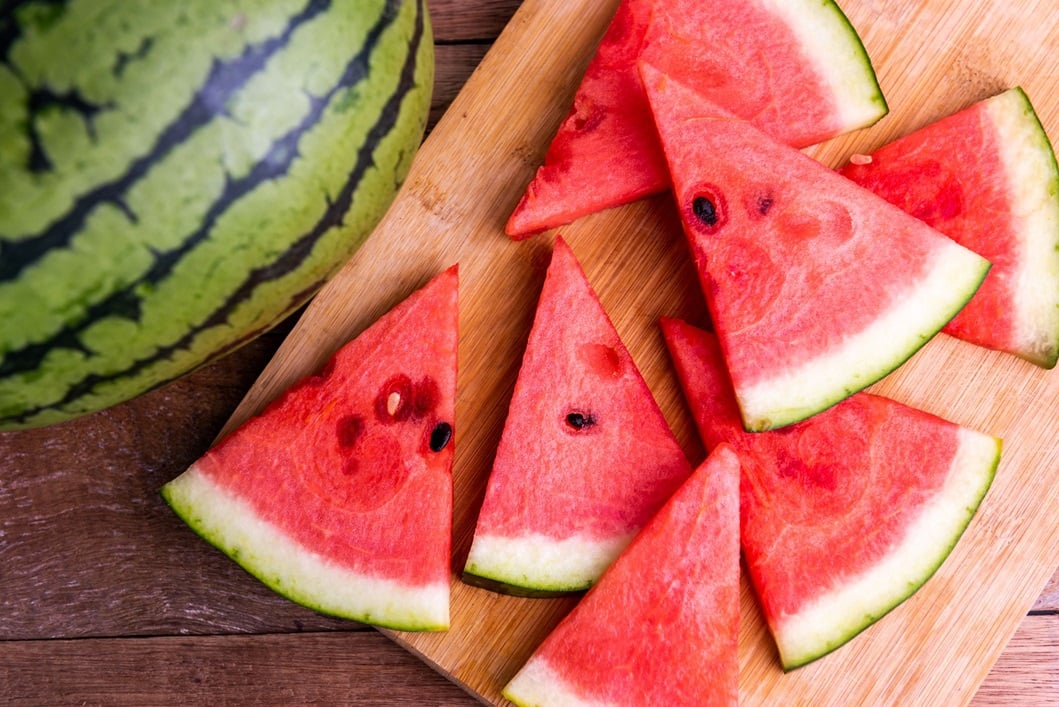
While watermelon may seem commonplace, its popularity extends across Asia, making it a beloved fruit in the continent. Beyond the familiar green exterior and red interior, watermelons come in a variety of other colors, including orange, yellow, and white. Offering a refreshing burst of sweetness, watermelon is a staple of summertime gatherings. It can either be enjoyed in its natural form or incorporated into juices, salads, and desserts for a delightful tropical treat.
2. The 5 most popular red Asian fruits
2.1. Lychee
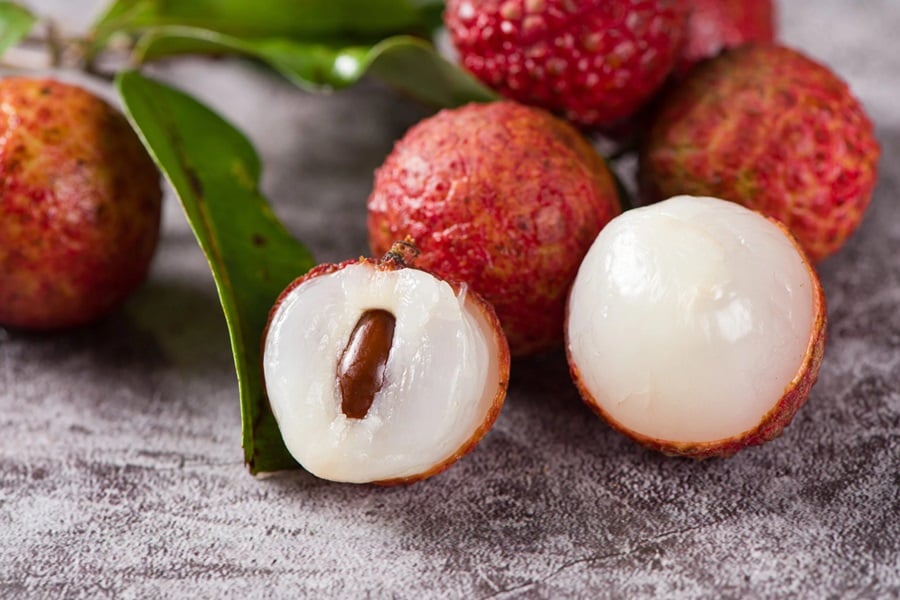
Asian fruit lychee captivates with its bumpy, pink-red skin, hiding a delightful secret within. Once you peel back the tough exterior, you are greeted by grape-like sweet and sour white flesh, which is tinged with hints of citrus and rose. Lychees are beloved across Asia and featured prominently in juices, smoothies, jams, and delectable desserts like lychee jelly or lychee mojito. This versatile fruit even finds its way into savory dishes, adding a surprising pop of sweetness to curries and salads.
2.2. Rambutan
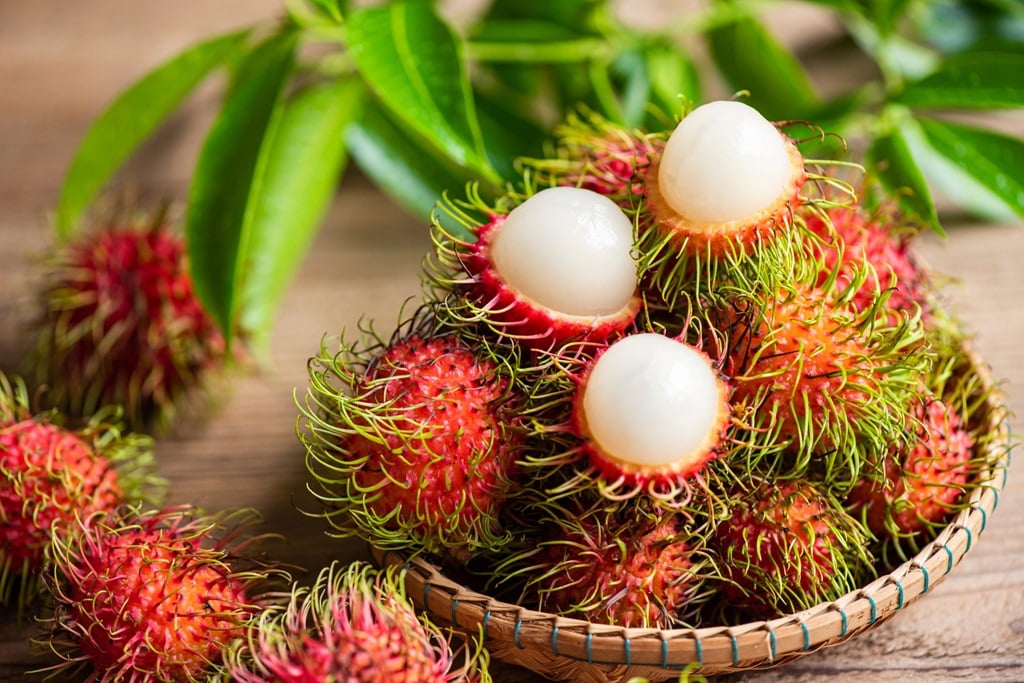
Named for its "hairy" appearance, rambutan boasts a rich red, spiky rind that belies its tender, creamy flesh inside. With a delicate balance of sweet and sour flavors reminiscent of grapes, these Asian fruits delight the palate with each juicy bite. While the exterior may be intimidating, inside lies a golf-ball-sized pulp waiting to be savored, offering a unique textural contrast between the firm rind and the soft flesh. Its compact size and ease of peeling make it a perfect on-the-go snack.
2.3. Dragon fruit
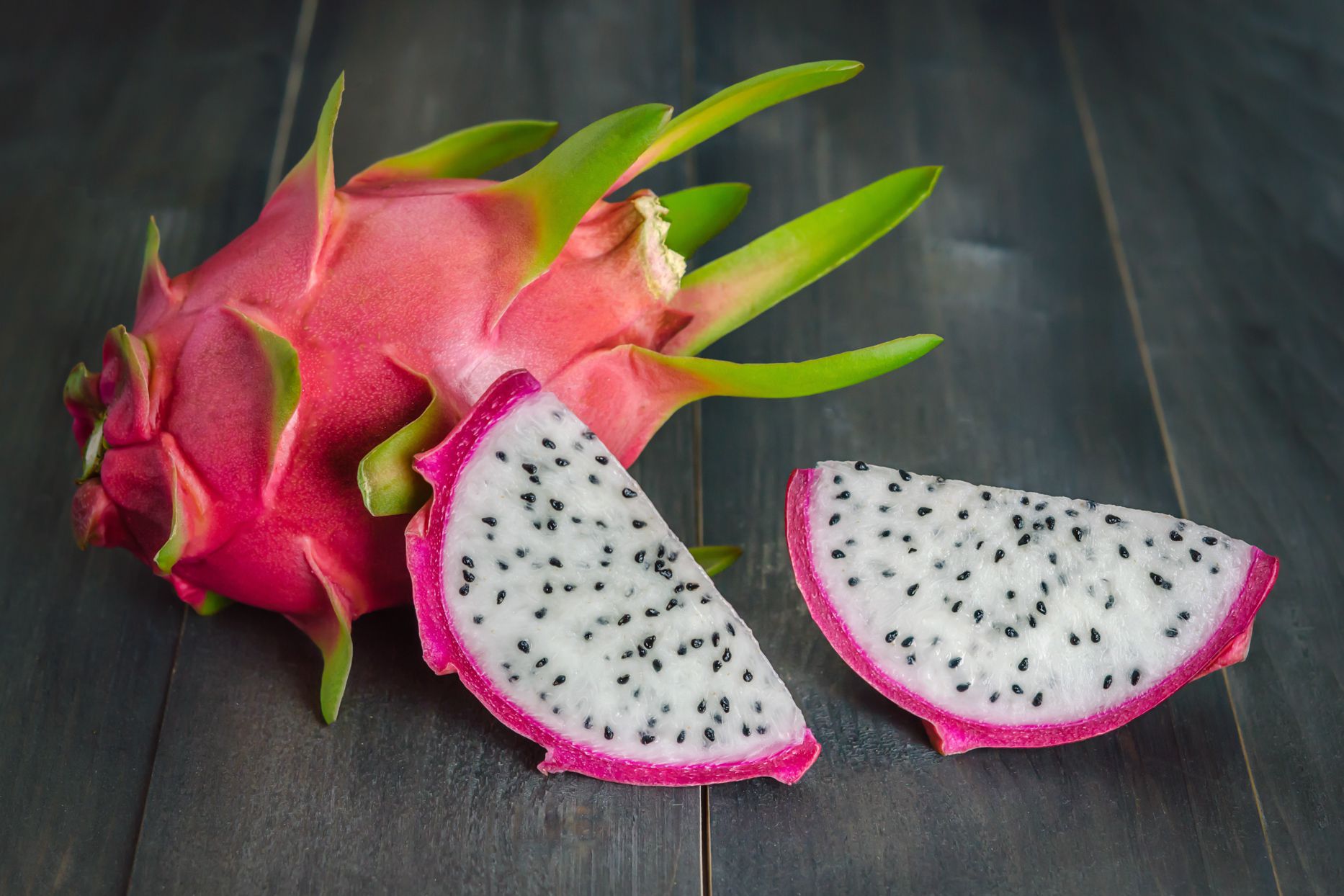
In this list of red Asian fruits, dragon fruit is a marvel of nature, resembling a mythical dragon's scales with its bright pink-red skin and flesh adorned with soft, green-tipped spikes. While red pitaya is the most common, Asia also offers Vietnamese white dragon fruit and yellow varieties, each with its own unique appeal. Despite its otherworldly appearance, dragon fruit's taste is akin to a blend of pear and kiwi, offering a subtle sweetness that shines in smoothie bowls and fruit markets across the continent.
2.4. Tambis
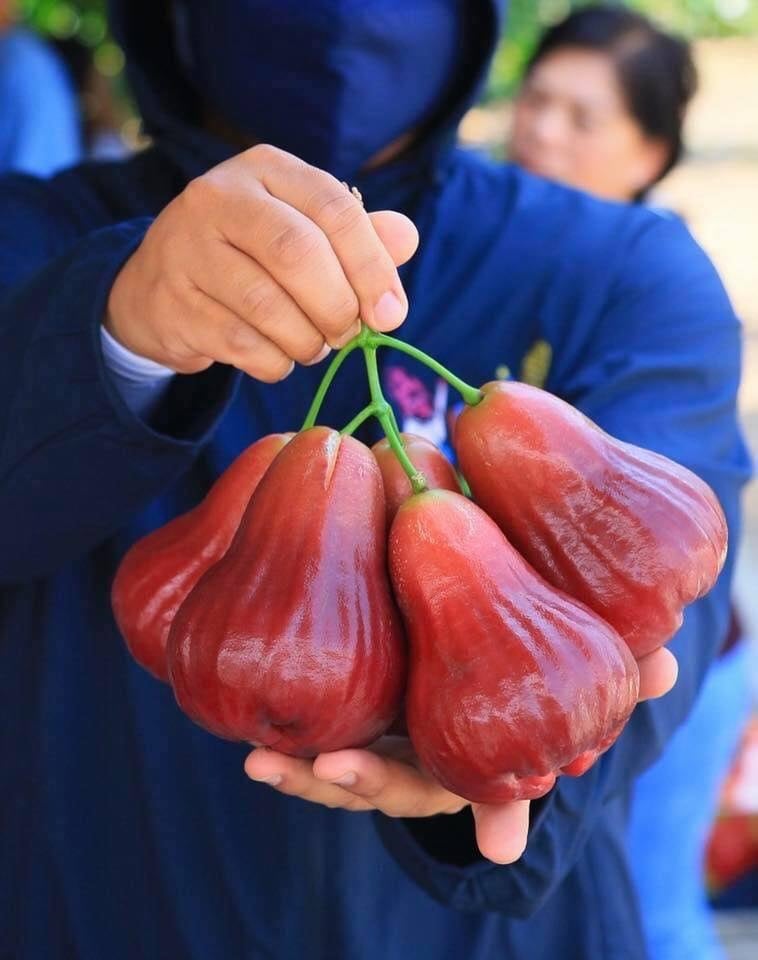
Among the common Southeast Asian fruits, tambis is a round, reddish fruit boasting sweet, slightly tangy, and watery flesh. With its refreshing taste and mild sweetness, tambis is a popular choice for snacking, especially during hot summer days. Simply slice and enjoy the flesh, being mindful of the seeds within. While not as intensely sweet as some other tropical Asian fruits, tambis packs a punch of vitamin C and fiber, making it a healthy and refreshing choice.
2.5. Chinese bayberry
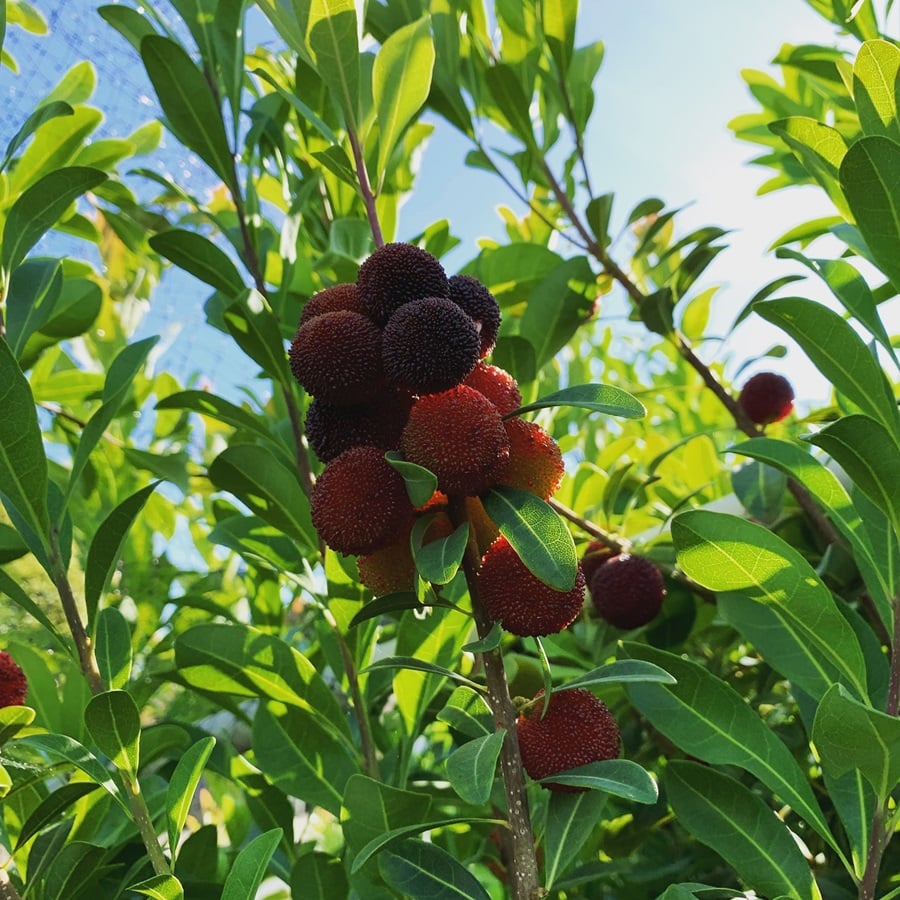
Also known as yangmei or waxberry, Chinese bayberry trees dot the landscapes of China, offering a rich red bounty under the summer sun. With a taste reminiscent of strawberries, cranberries, and pomegranates combined, Chinese bayberry tantalizes the taste buds with its unique blend of sweetness and bitterness. Used in everything, from juices, desserts to even traditional medicine, Chinese bayberry is one of the more versatile and beloved red Asian fruits.
3. What are the best yellow Asian fruits?
3.1. Banana
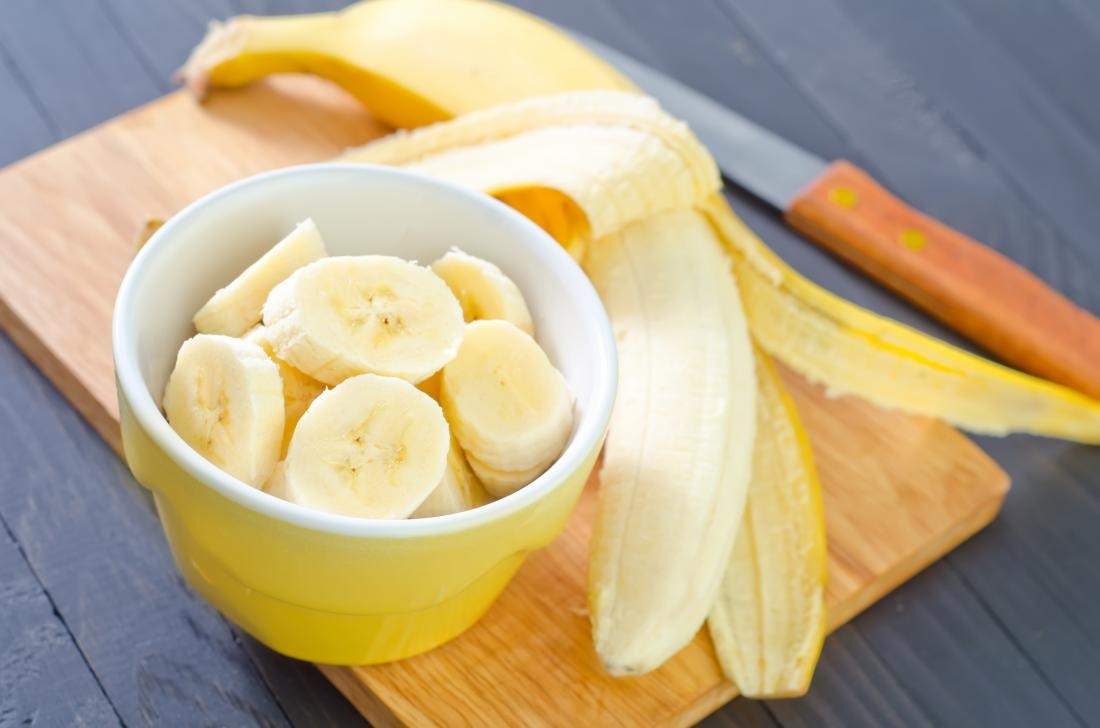
Bananas, though ubiquitous globally, exhibit surprising diversity across Asia. From the familiar Cavendish variety to the vibrant pink bananas of India, each region offers its own twist on this beloved fruit. Size also varies dramatically, from tiny specimens to giant bananas, each with their own unique taste and texture. The tiny bananas of the Philippines, known as "saba," are perfect for grilling or frying, while the pink bananas of India offer a creamy texture and delicate aroma.
3.2. Longan
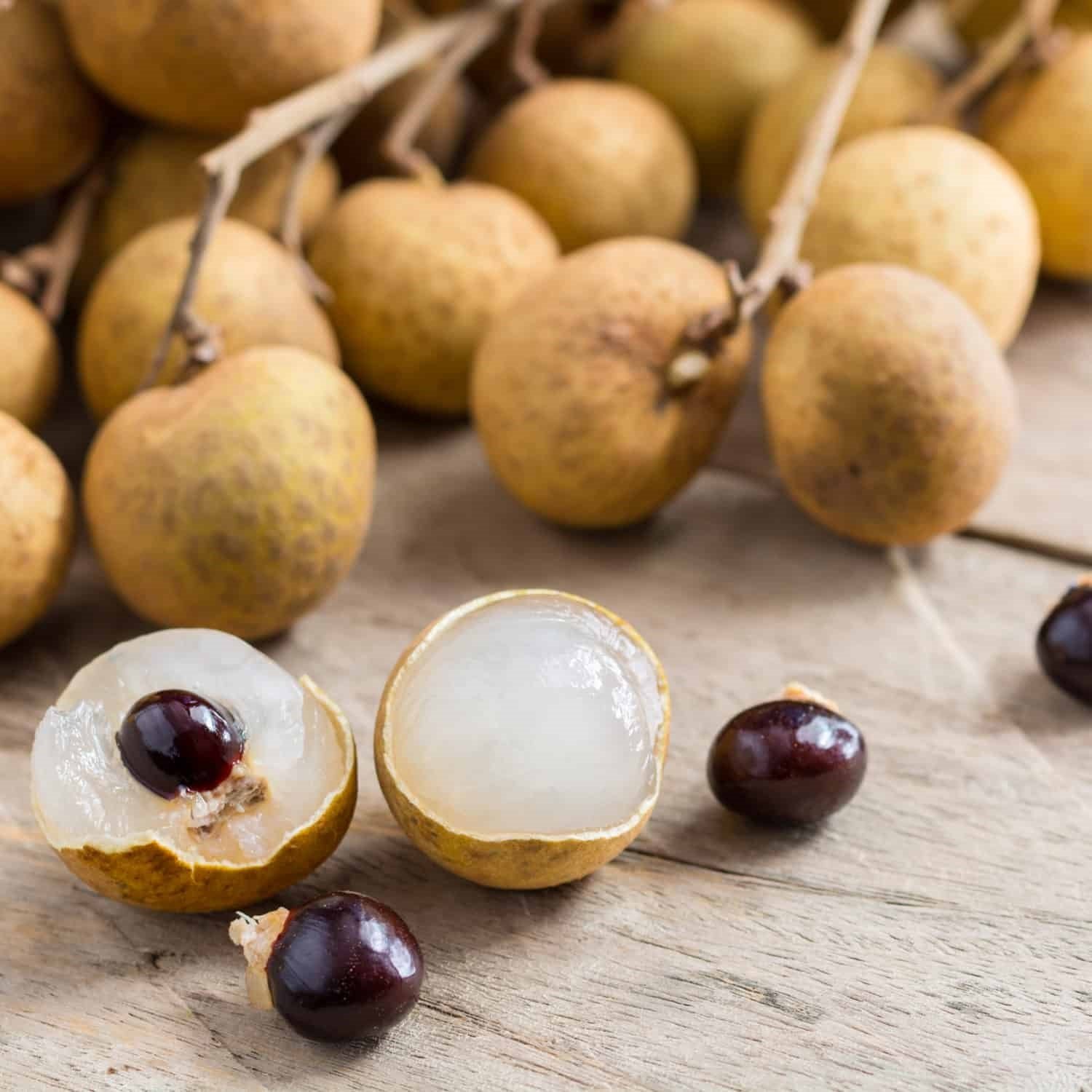
Known as the "dragon's eye" in Cantonese, longan entices with its delicate flesh encasing a pearly black seed. With a texture akin to rambutan or lychee, longan's sweet and sour flavor profile is reminiscent of grapes but sweeter than lychee, making it a popular choice for desserts like sorbets. This versatile fruit has even found its way into savory dishes like stir-fries and salads. Whether you savor it fresh from its shell or indulge in a longan-infused treat, it is sure to tantalize your taste buds.
3.3. Pear
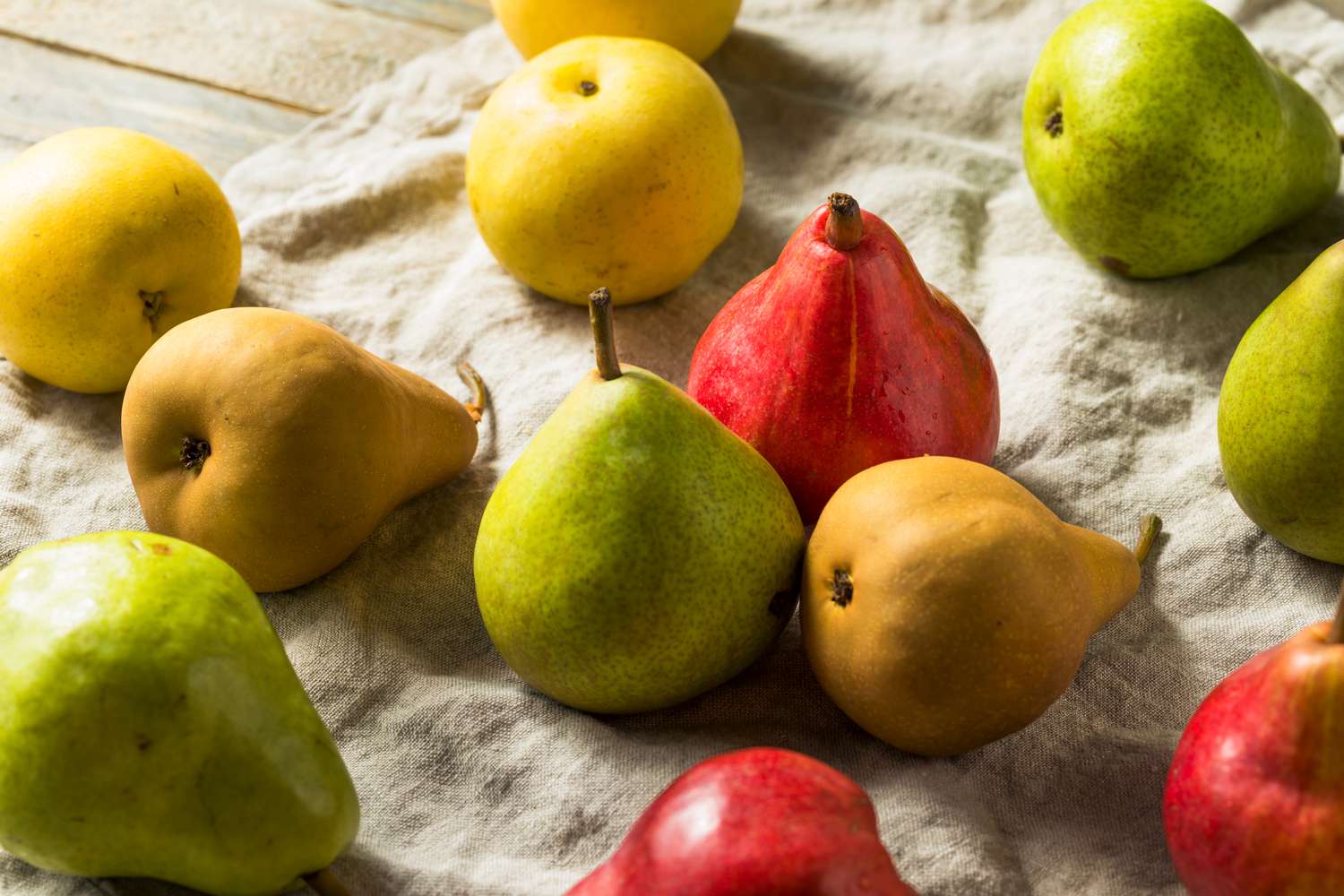
In this list of yellow Asian fruits, Asian pear strikes a harmonious balance between the crispness of an apple and the sweetness of a pear. With their distinctive shape and refreshing flesh, Asian pears offer a delightful alternative to their Western counterparts, boasting a sweet flavor with a hint of floral aroma. Pears are particularly popular in Japan and Korea, where they are enjoyed fresh, pickled, or dried. Their crispness and sweetness make them a perfect snack or addition to salads.
3.4. Mango
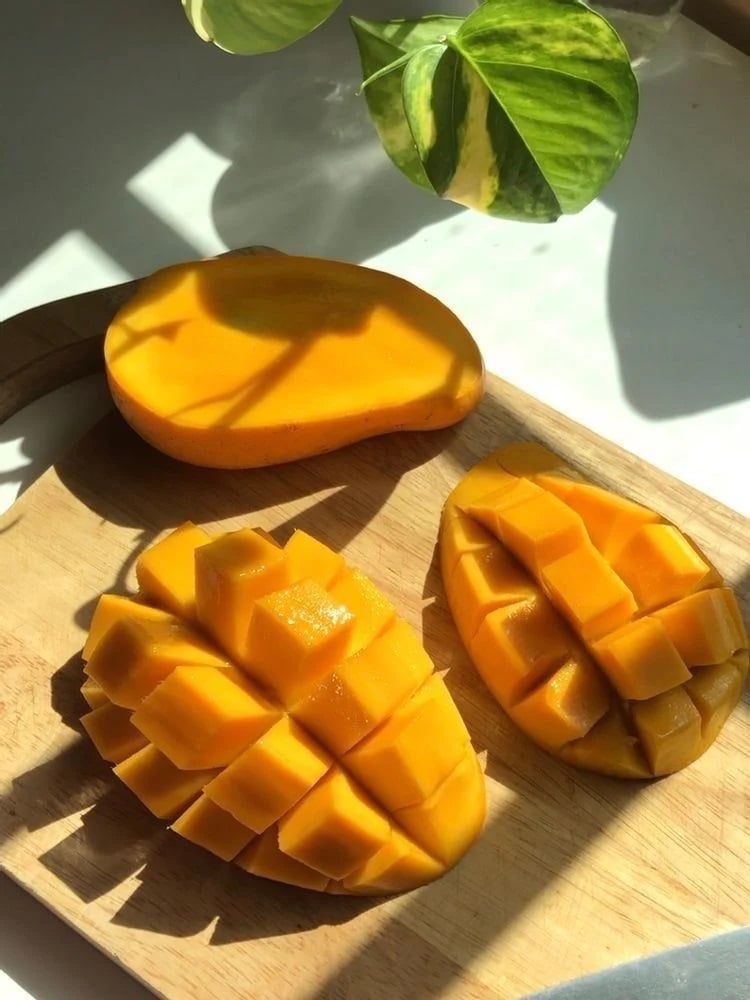
Celebrated as one of the quintessential tropical Asian fruits, mango captivates with its yellow flesh and juicy texture. Among Asian countries, Vietnamese mango is very popular for its size and taste. With a citrusy taste and floral aroma, mangoes lend themselves to a myriad of sweet and savory dishes, from smoothies to salads, showcasing their versatility and irresistible flavor. Mangos are also especially popular as the main ingredient for Thai mango sticky rice.
3.5. Papaya
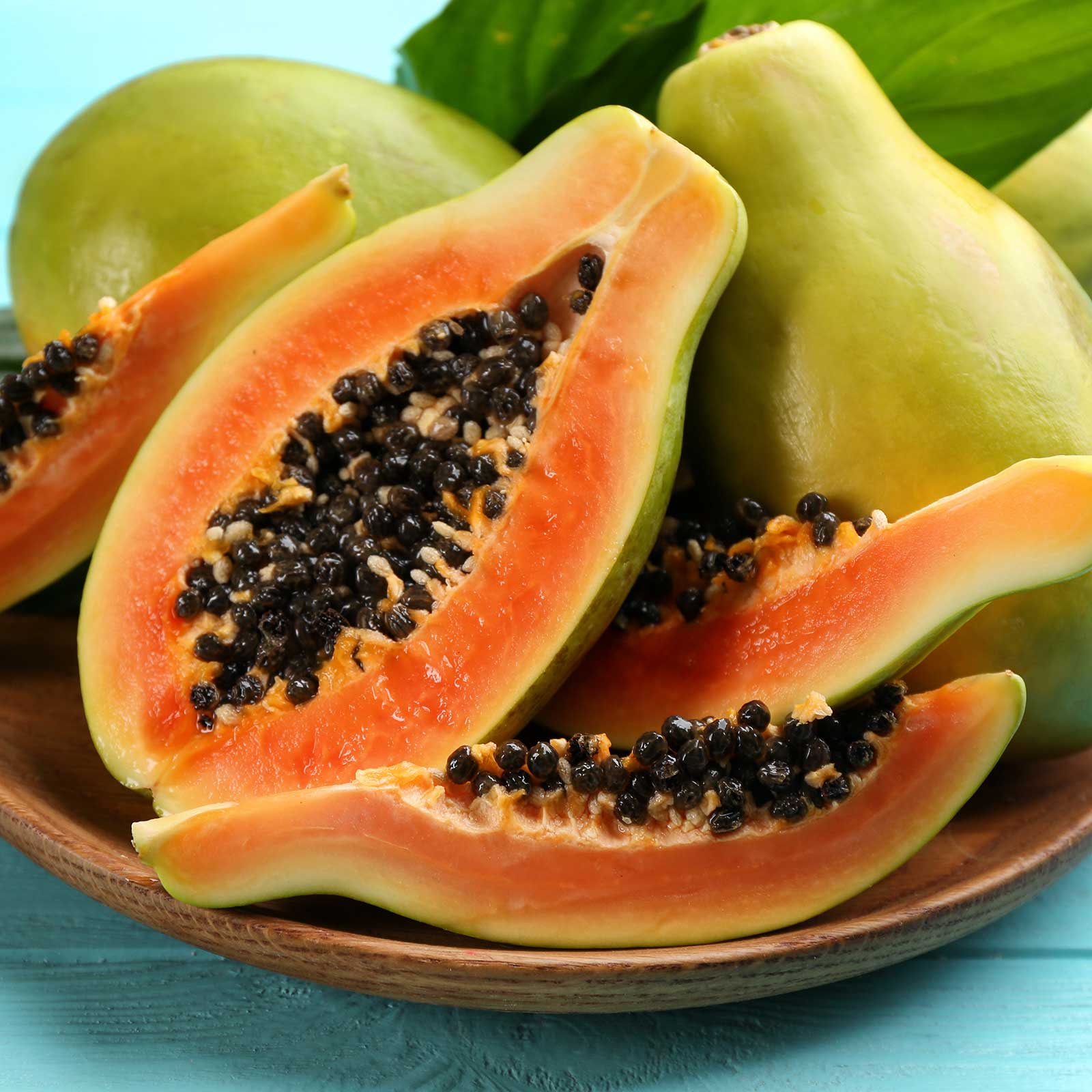
Wrapped in a thin colorful skin, papaya's pulp boasts a mildly sweet flavor reminiscent of cantaloupe melon. With its buttery texture and refreshing taste, papaya is often likened to a sweeter pumpkin, offering a versatile ingredient for juices, jams, and desserts. Papaya's vibrant color and tropical flavor also make it a popular ingredient in cocktails and mocktails. Additionally, papaya seeds are packed with nutrients that aid digestion, making them a valuable addition to supplements.
3.6. Starfruit
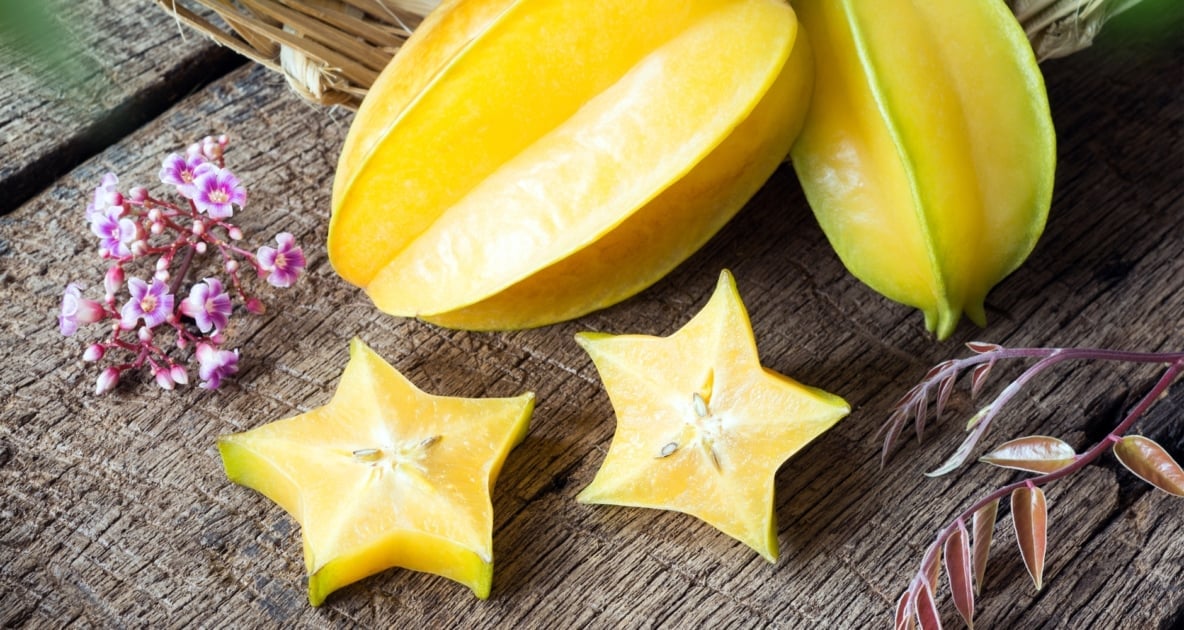
With its striking appearance, starfruit stands out among the truly exotic yellow Asian fruits. Featuring edible yellow skin and flesh easily sliced into decorative stars, starfruit offers a taste reminiscent of apples, pears, and grapes, with a subtle sweetness and sour undertone. Its flavor profile can vary depending on the ripeness, ranging from tart and tangy when unripe to sweet and juicy when fully mature. Perfect for garnishing desserts and salads, starfruit will add a touch of elegance to any dish.
4. Top 3 delicious purple Asian fruits
4.1. Mangosteen
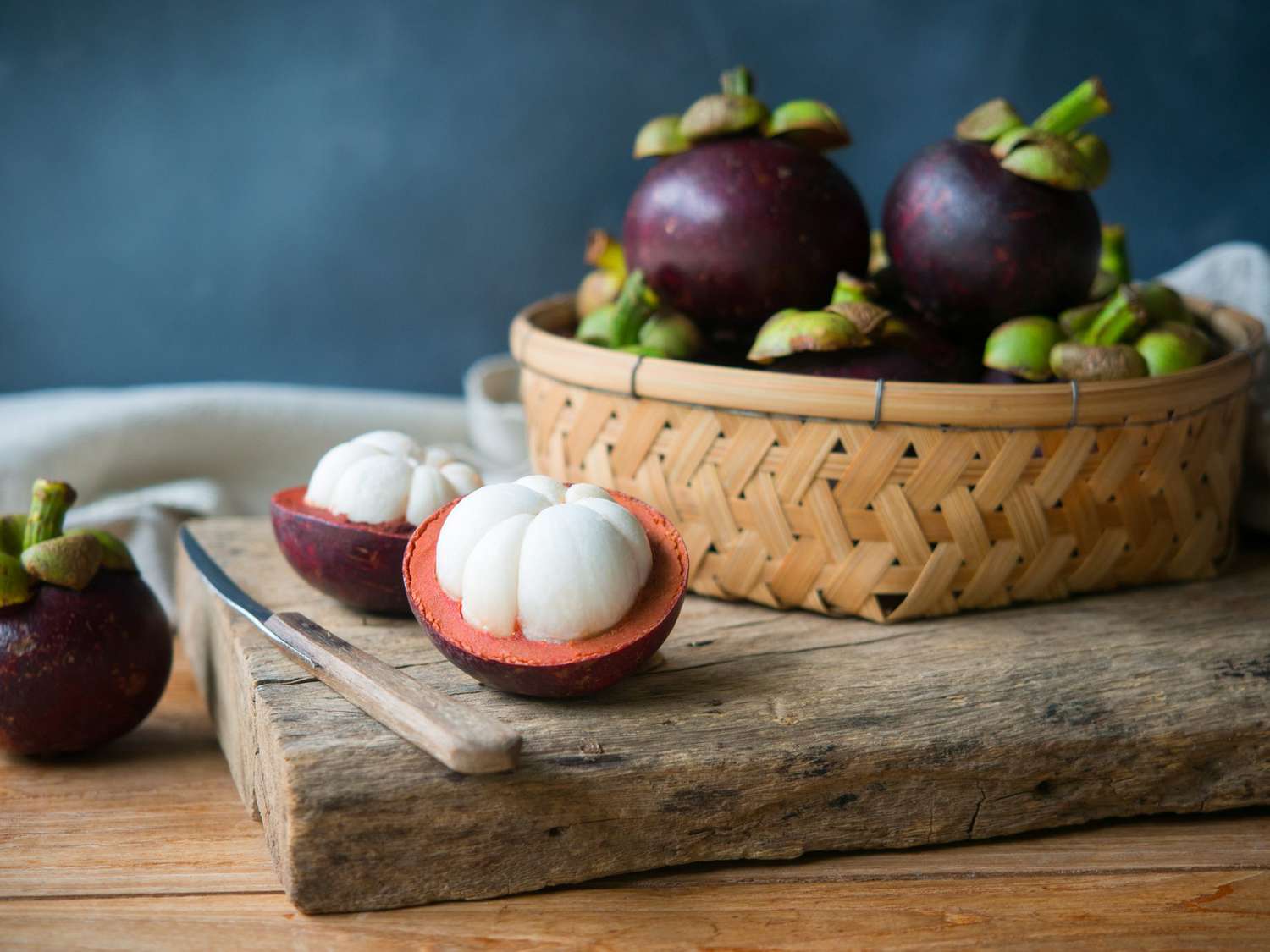
Mangosteen, revered for its exquisite flavor, has found its way into jams and desserts across Vietnam, Thailand, and Indonesia. Encased in a deep purple, tough skin lies a treasure trove of white, juicy flesh reminiscent of cloves. With a taste akin to a delightful blend of peach and pineapple, mangosteen captivates with its sweetness and juicy texture. Among other purple Asian fruits, it is prized for its delicate flavor, making it a luxurious addition to desserts in Southeast Asia.
4.2. Passion fruit
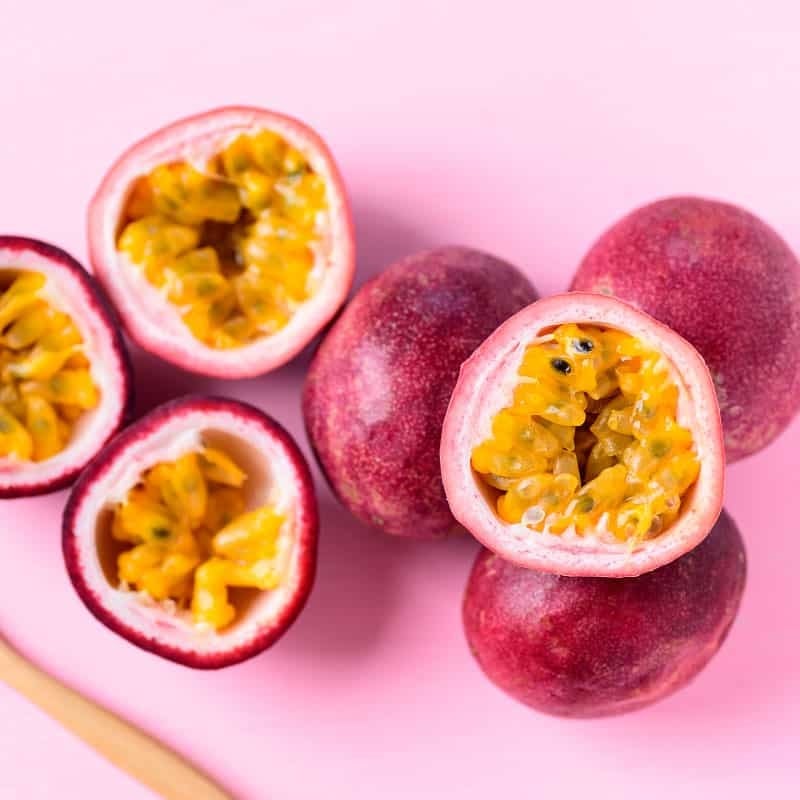
Renowned for its explosive taste that has been enjoyed for generations, passion fruit lives up to its name with its bold flavor profile in the list of purple Asian fruits. Despite its tough skin, the real delight lies within the globby, fleshy deep-yellow pulp, along with the speckled fruit with black seeds. Whether eaten raw for an intense, bitter, and acidic experience or incorporated into smoothies, juices, and desserts, these Asian fruits offer a burst of flavor with every bite.
4.3. Grape
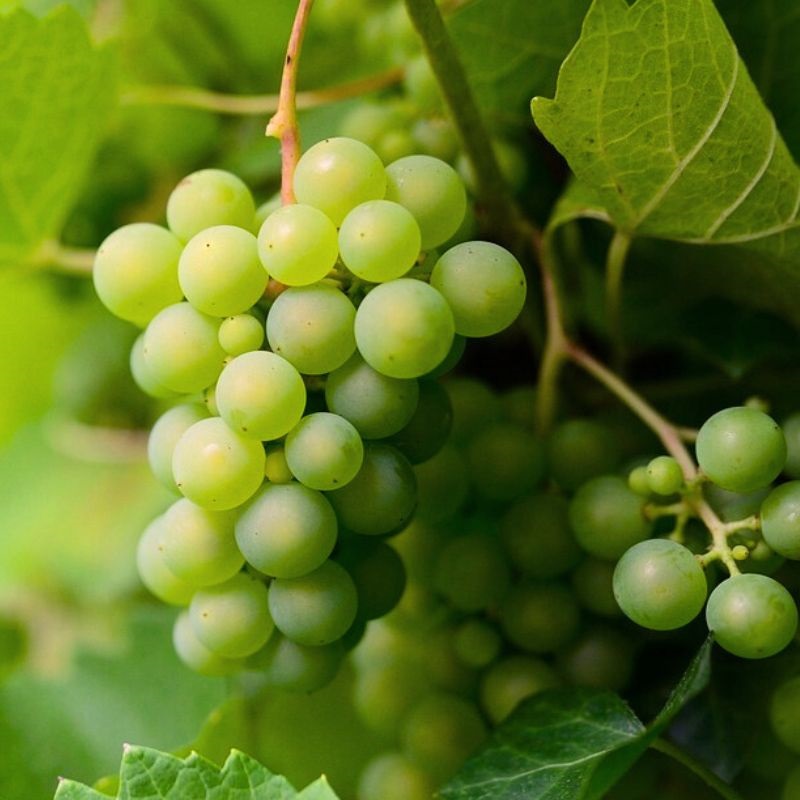
Grapes, a familiar fruit across Asia, come in a variety of colors. Among them, Kyoho grapes reign supreme, boasting a deep purple hue and large seeds within juicy flesh. With a high sugar content and mild acidity, Kyoho grapes offer a luscious sweetness that delights the senses, making them a favorite in East Asia and beyond. You can enjoy them fresh, use them in jams and jellies, or even try them in savory dishes like cheese plates for a surprising burst of flavors.
>>> Embark on Southeast Asia travel if you are looking to taste these Asian fruits!
5. Orange Asian fruits that you may not know
5.1. Mandarin orange
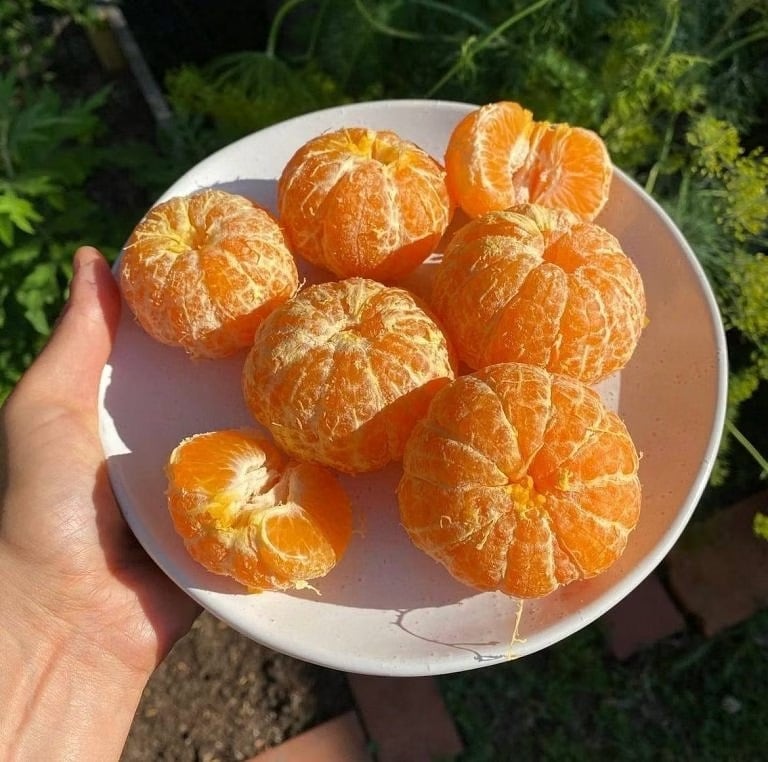
Originating from China, mandarin orange boasts a petite, round shape with easily separable segments, making it a convenient and delightful snack. With its sweet citrusy flavor, mandarin orange is a favorite among enthusiasts of Asian fruits, offering a burst of refreshment with every peel. Mandarin oranges are more than just a snack; their zesty rind adds a fragrant touch to marmalades and baked goods, while their segments can be used to create vibrant salads.
5.2. Persimmon
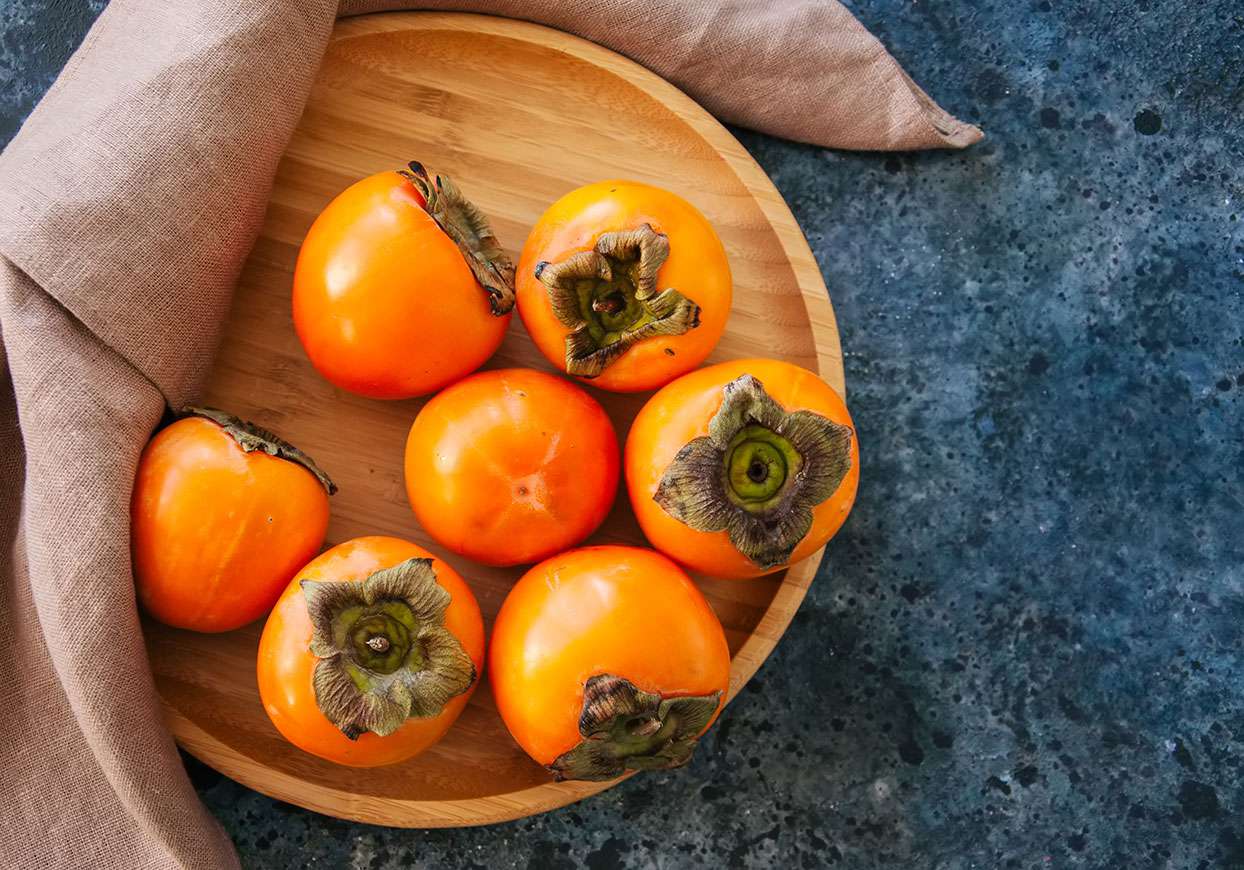
Among the plethora of persimmons worldwide, Japanese persimmon stands out for its unique flavor and texture. With an appearance reminiscent of a tomato, Japanese persimmon features sweet, crisp, and juicy flesh that delights the palate with its honey-like sweetness. You can enjoy it, incorporate it into salads for a touch of sweetness, or try it baked for a warm and comforting dessert. Whichever way you try it, persimmon will offer a taste of Japanese culinary heritage.
5.3. Yuzu
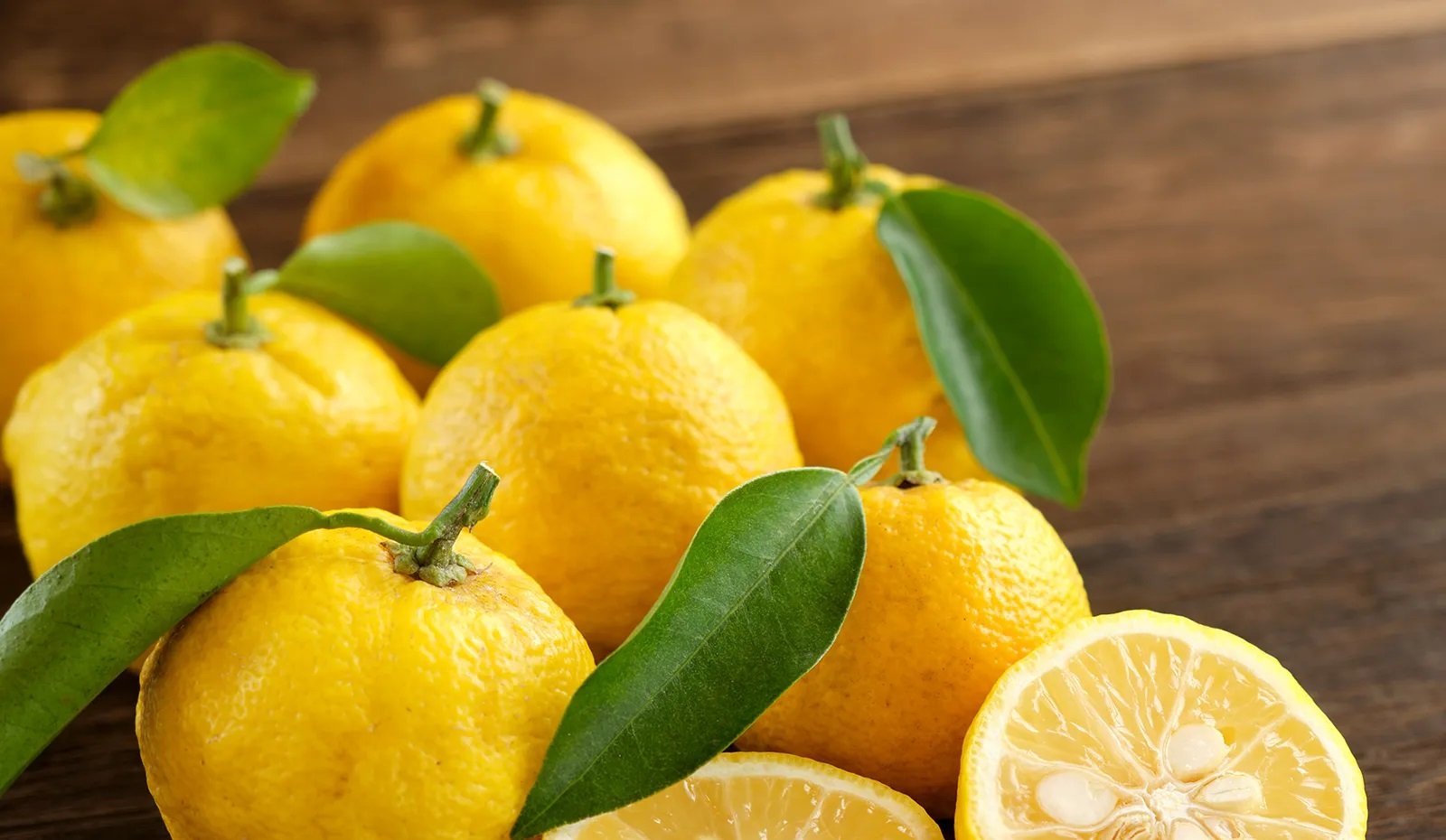
Hailing from China but embraced across Japan and other Asian countries, yuzu is a versatile variety in the family of Asian citrus fruits, prized for its unique flavor profile. Resembling a mandarin on the outside with the inner flesh and yellow color of a lemon, yuzu boasts a potent combination of sour, bitter, and citrusy notes. While rarely eaten raw due to its intense flavor, yuzu has found its way into a myriad of sauces, condiments, and dishes, adding a zesty touch to sushi and other savory delicacies alike.
>>> Explore the world of Asian food that makes this continent well-known all over the world!
6. Other Asian fruits that you should try once
6.1. Sapote
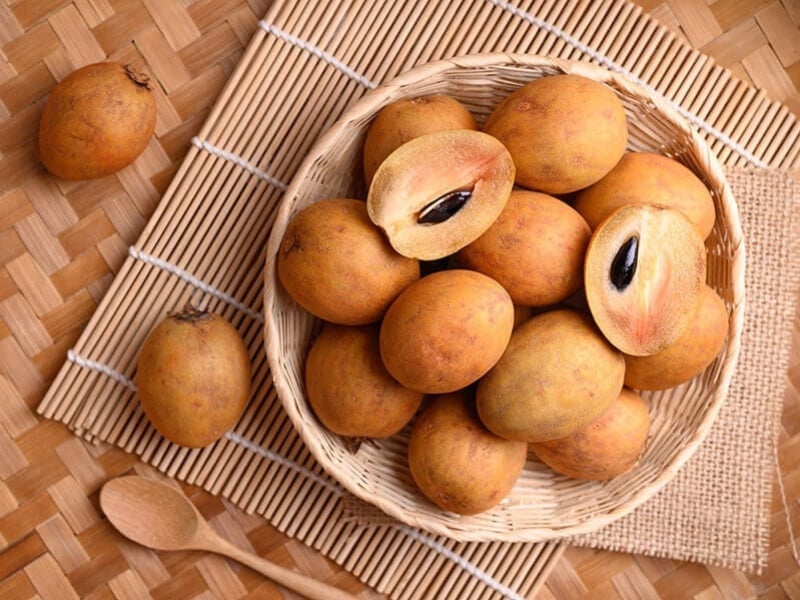
While native to Central America, sapote has found a home in Asia with its unique appearance and flavor. Featuring a brown, rough skin and sweet, salmon-colored flesh, sapote offers a creamy texture reminiscent of sweet potato and pumpkin. To indulge in these exotic Asian fruits, simply cut them in half, remove the large seeds, and savor the luscious flesh, a delightful blend of sweetness and creaminess. Sapote's versatility shines in savory dishes, adding a touch of sweetness to curries and sauces.
6.2. Kiwi
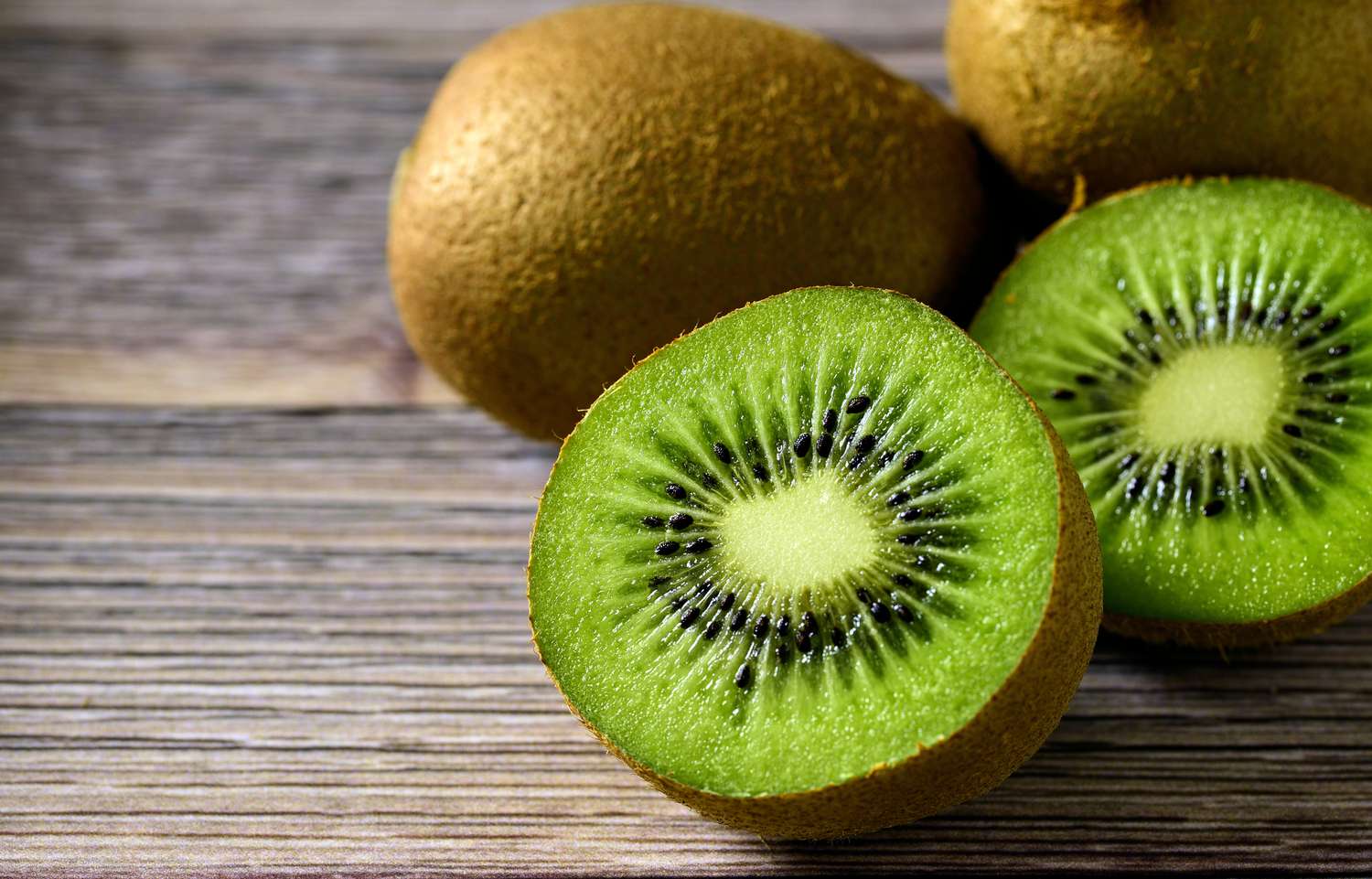
Native to China, kiwi has become a global sensation, celebrated for its vibrant green flesh speckled with tiny black seeds. With a sweet and tangy flavor akin to strawberries, kiwi offers a refreshing taste experience. While many choose to peel their kiwis, the skin is edible, adding an extra layer of texture and flavor to this beloved fruit. Kiwi’s rich source of vitamin C and antioxidants makes it a healthy snack choice, while its vibrant green color adds a pop of color to any salad or smoothie.
6.3. Tamarind
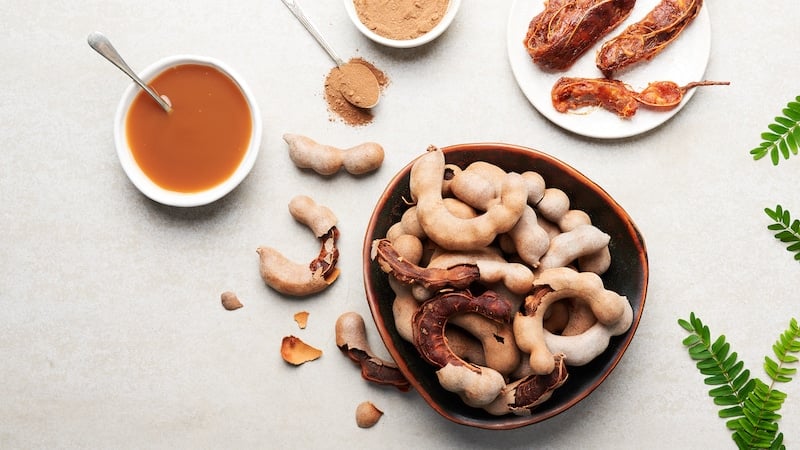
A staple among Southeast Asian fruits and in Middle Eastern cuisine, tamarind adds a burst of flavor to a wide range of dishes, from curries to sauces. Encased in a crispy outer shell, tamarind reveals a long, reddish-brown pulp with a tangy, sour taste similar to apricots, prunes, and dates. Moreover, tamarind’s powdered form adds a unique flavor dimension to chutneys and dressings. So, the next time you are looking to experiment with new flavors, reach for tamarind!
6.4. Langsat
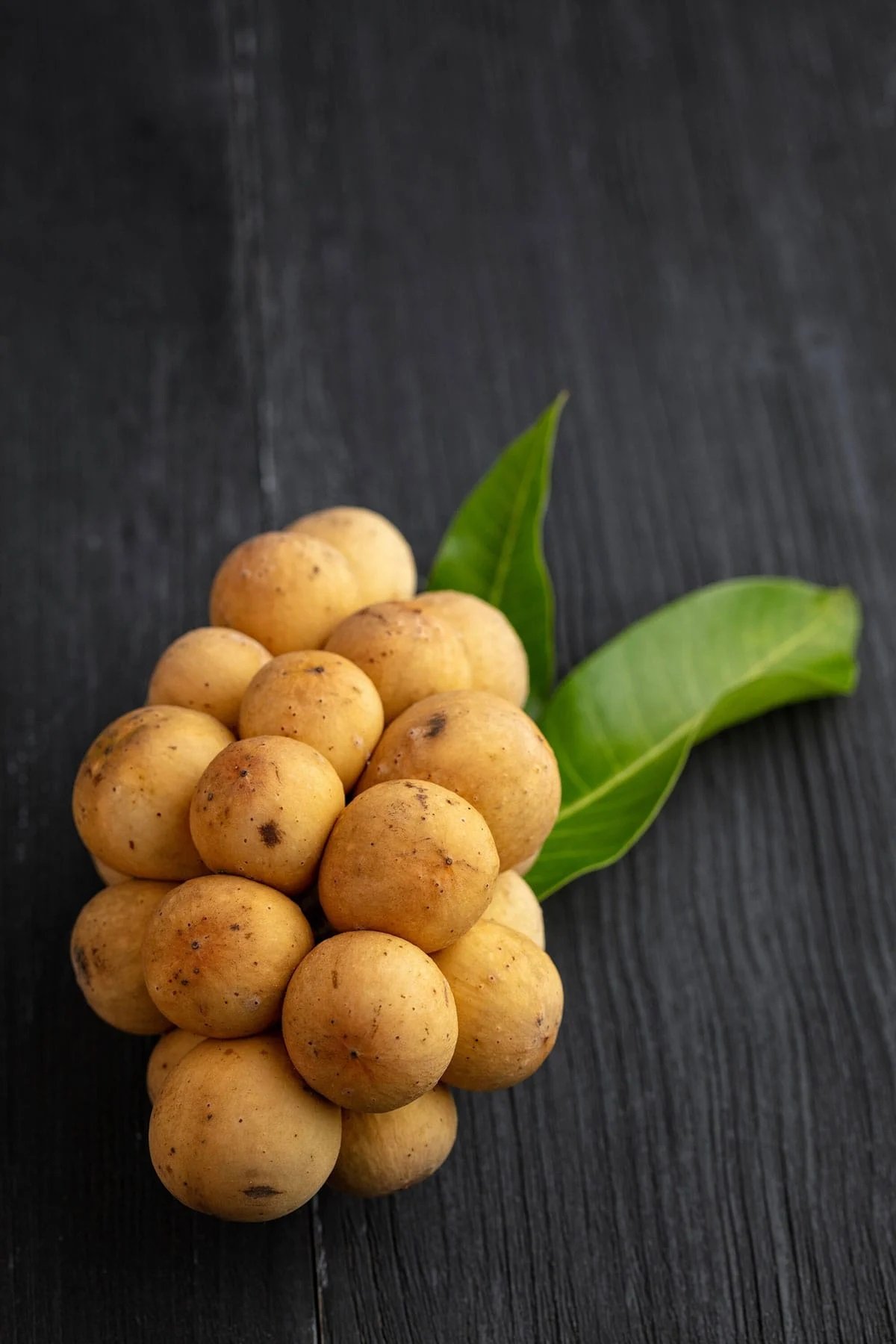
Native to Malaysia, langsat, also known as lanzones, delights with its thin, pale brown skin and juicy, tangy flesh. With a flavor profile reminiscent of a bittersweet grapefruit, langsat offers a refreshing burst of tanginess with each bite. Langsat captivates with its unique versatility, whether eaten raw or incorporated into syrups and jams. Its seeds, when roasted, reveal a nutty flavor similar to chestnuts, adding a delightful textural contrast to desserts and snacks.
6.5. Wood apple
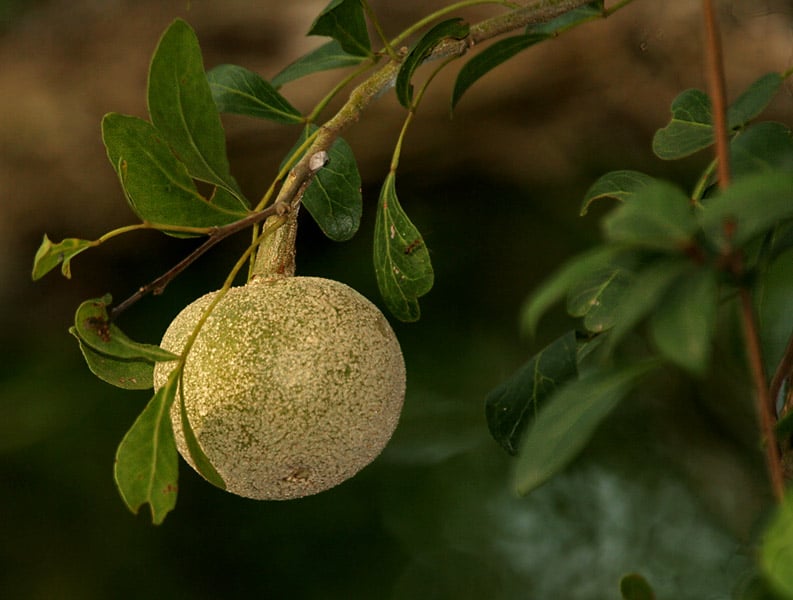
Originating from India, wood apple presents a unique culinary experience with its hard, woody exterior and aromatic, grainy flesh. It offers a sweet and tangy taste profile, often utilized in chutneys, jams, and curries. To enjoy this exotic fruit, crack it open, scoop out the pulp, and incorporate it into various recipes. While its exterior may resemble a coconut and its interior may evoke the image of pulled pork, wood apple's flavor is surprisingly mild once you overcome its initial scent.
6.6. Snake fruit

Despite its intimidating reddish-brown spiked skin, snake fruit is remarkably easy to peel. Beneath its exterior lies a clove-like glob of juicy white or yellow pulp, boasting a sweet honey taste with a hint of acidity. Resembling a unique blend of apple, banana, and pineapple, snake fruit, also known as salak, offers a delightful taste. From traditional cuisine to modern gastronomy, snake fruit's versatility shines, infusing dishes with an exotic allure.
6.7. Pulasan
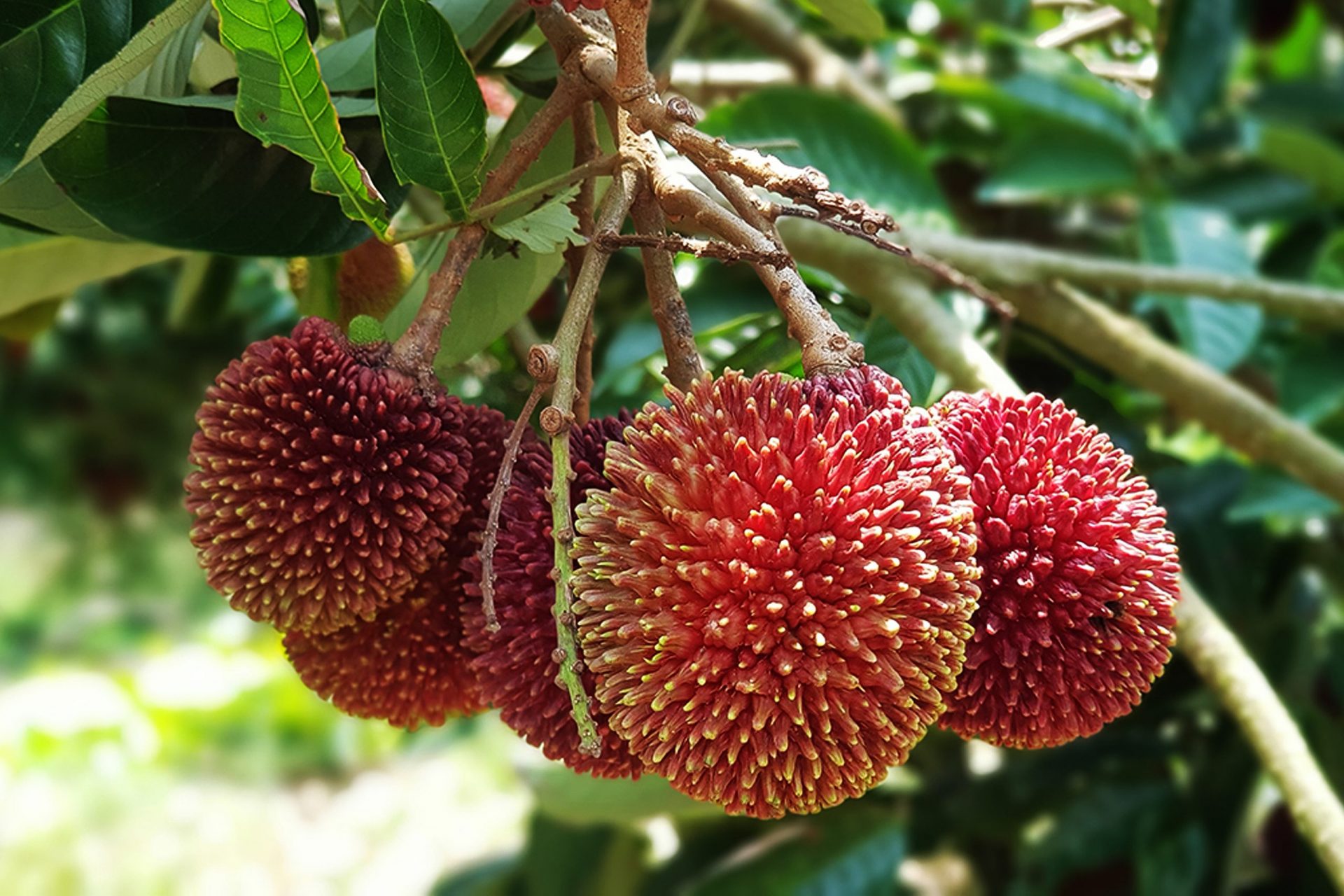
Closely related to rambutan, pulasan stands out with its thick, leathery skin adorned with short, blunt spikes. Once peeled, it reveals a luscious white-yellow orb of delicious flesh, boasting a sweet and sour balance akin to grapes but with a sweeter twist. With its fleshy and creamy texture, these Asian fruits offer a delectable treat. Blended into smoothies, it adds a rich sweetness, while its flesh can be incorporated into ice cream or sorbet for a truly unique treat.
6.8. Goji berries
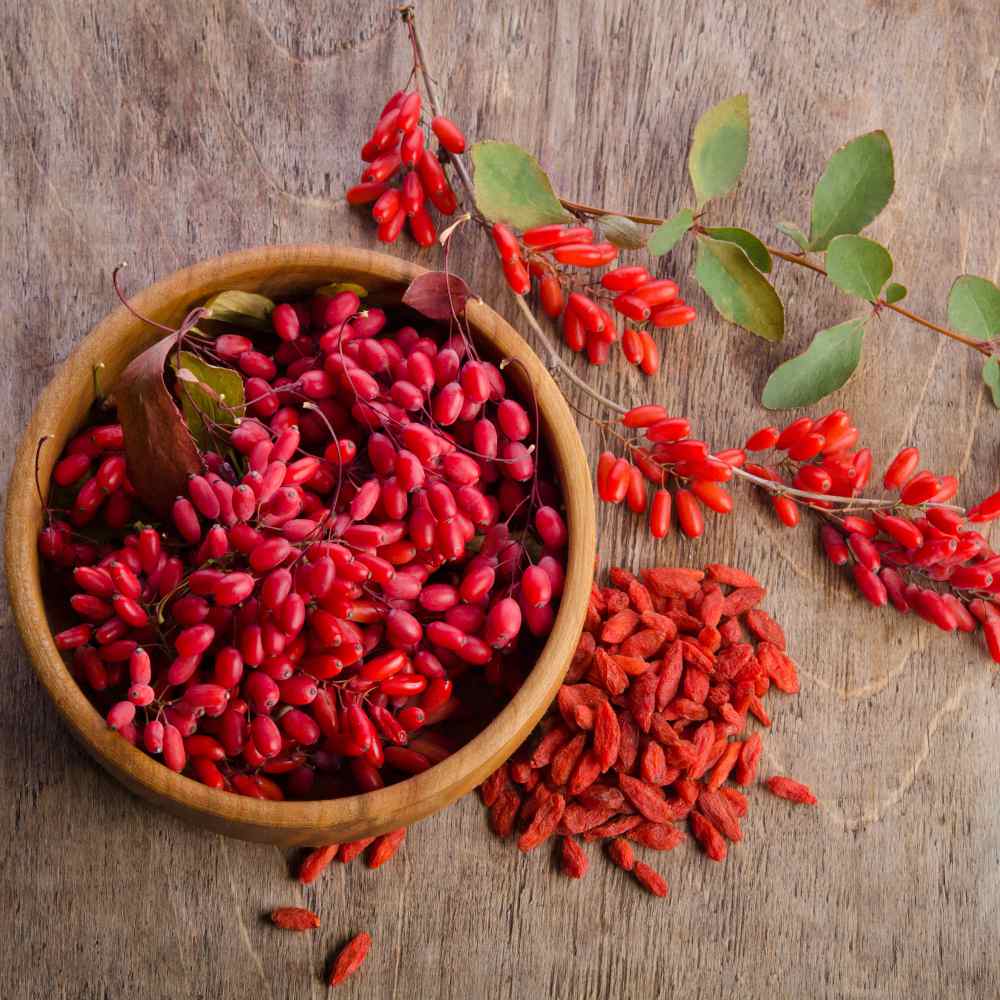
Rising in popularity as a superfood, goji berries are celebrated across Asia for their antioxidant-rich properties. These small red-orange berries boast a taste reminiscent of cranberries and sour cherries, with a tough, chewy exterior that adds to their appeal. Whether eaten as a snack or used as a topping for baked goods, cereals, and yogurts, goji berries offer a nutritious addition to any diet, earning them the moniker of the "anti-aging" fruit in many Asian countries.
>>> Not knowing where to visit in Asia? Check out these Asia tours!
Asian fruits represent not just a culinary adventure; they offer a journey through culture, tradition, and natural abundance. Whether you are indulging in the sweet juiciness of a mango or savoring the creamy richness of a durian, each bite tells a story of heritage.
Among Asian countries, Vietnam has a variety of tasty fruits. You can go to some of Vietnam travel’s top destinations like Hanoi, Ho Chi Minh City, Phu Quoc, Nha Trang, Hoi An, and Ha Long to experience the diverse fruits Vietnam has to offer.
To enhance your experience, we recommend indulging in the rich culinary delights and luxurious accommodations offered by Vinpearl. Vinpearl is known for top-notch hotels and resorts that come with amazing service. From spacious rooms to fine-dining options, you will find everything you need for a memorable vacation at Vinpearl.

While you are in Vietnam, don't miss the chance to explore VinWonders, the place to be for the ultimate fun. VinWonders is a chain of entertainment complexes located in some of the most beautiful cities in Vietnam, promising a day filled with excitement for you and your loved ones.
>>> Book rooms in Vinpearl Phu Quoc, Vinpearl Nha Trang, Vinpearl Resort & Golf Nam Hoi An, Vinpearl Resort & Spa Ha Long for a comfortable stay in Vietnam!

























